A minimum screen resolution of 768 x 576 is required for the full Virtual Healthy School tool interactive experience. You may view a text-only version of the tool VHS Download Full Text [PDF - 882 KB].



![VHS Download Full Text [PDF - 475 KB] VHS Download Full Text [PDF - 475 KB]](img/btn-download.png)
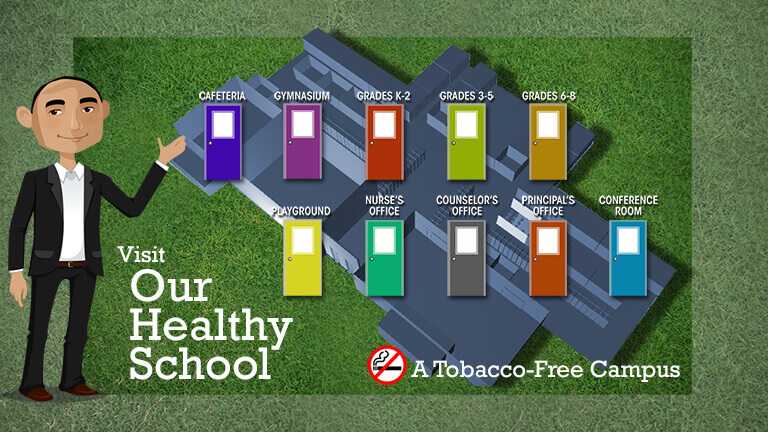

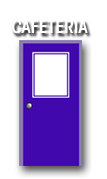

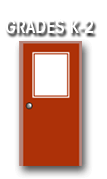












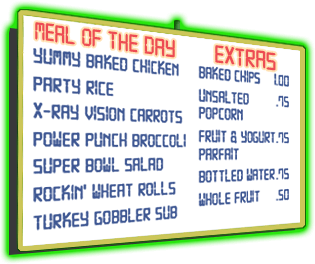



- Clock
- Nutritional Poster
- Water Station
- Menu Board
- Lunch Tray
- Fruit Basket
- Competitive Foods







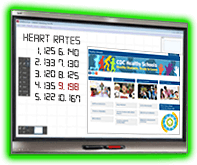
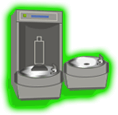
- Pedometer Station
- Water Station
- PE Standards Poster
- Climbing Wall
- SMART Board
- Special Events Poster
- Technology Cart


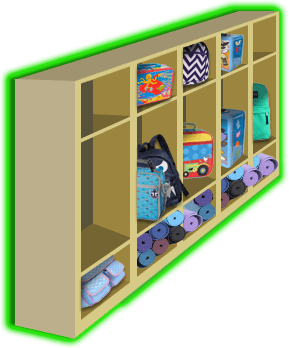



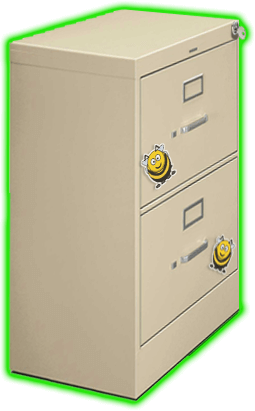


- Reward Box
- Cubby Area
- Activity Box
- Sink
- Volunteer Desk
- Locked Cabinet
- Artwork








- Apple
- Water Bottle
- Bike Helmet
- Banner
- Clock
- Laptop


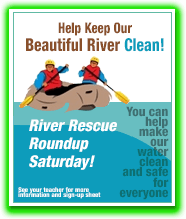




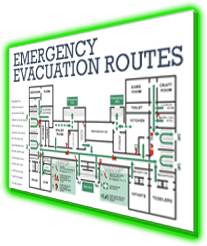

- PA Speaker
- Community Poster
- Clothes Locker
- Athletic Shoes
- Student Agenda
- Teacher Workstation
- Emergency Plans
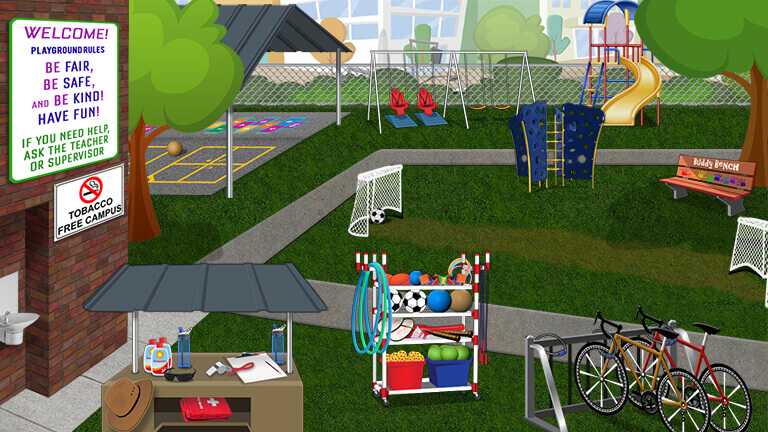


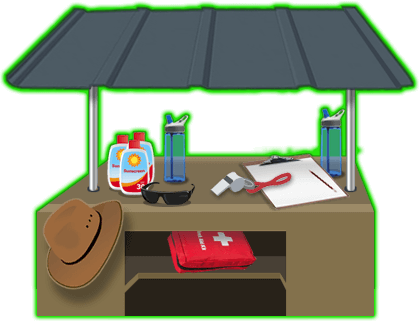



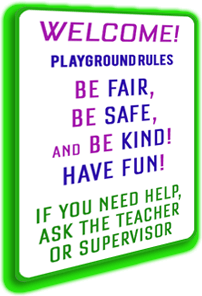
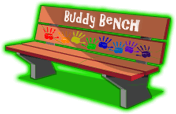
- Supervisor Guidance
- Adaptive Swing
- Bike Rack
- Equipment Cart
- Walking Trail
- Rules List
- Buddy Bench
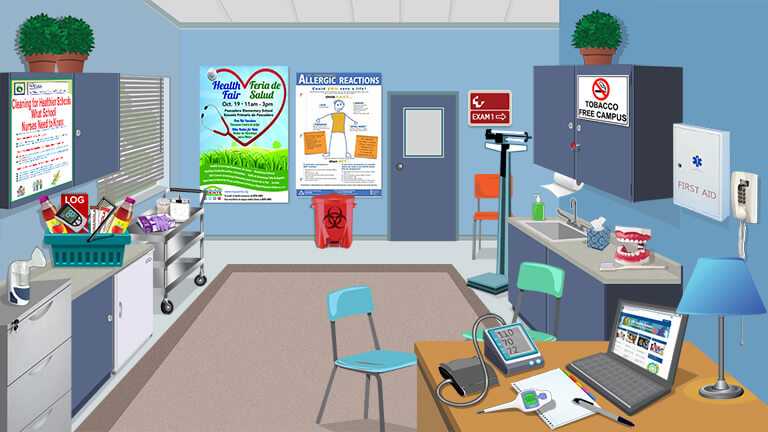
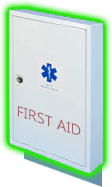








- First Aid Kit
- Health Poster
- Glucometer
- Scale
- Teeth Model
- Nebulizer
- Community Poster
- Locked Cabinet










- Phone
- Bulletin Board
- Art Easel
- Storage Shelf
- Bookshelf
- Computer
- Door Sign
- Diversity Poster
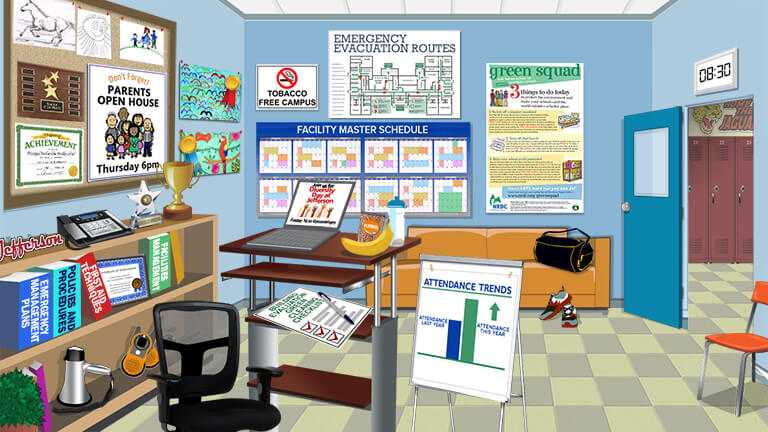




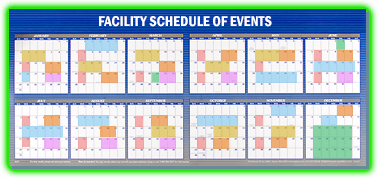




- Facility Schedule
- Emergency Toolkit
- Attendance Chart
- Standing Desk
- Awards & Art
- Clock
- Gym Bag & Shoes
- Open Door
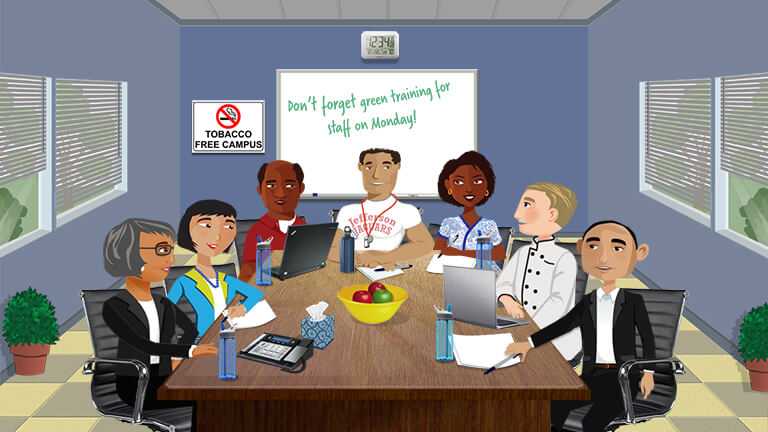

- Health Education
- Nutrition Services
- School Health Services
- Physical Education
- Counseling, Psychological, and Social Services


Virtual Healthy School (VHS)

Hi, I'm Principal Paul. Welcome to Jefferson School, our Virtual Healthy School, an interactive tool that shows you how components of the Whole School, Whole Community, Whole Child (WSCC) model can be integrated into your school. The Virtual Healthy School is one of many resources available from the School Health Branch of the Centers for Disease Control and Prevention (CDC).
The WSCC model calls for schools, families, and communities to work together. It expands on the Coordinated School Health initiative to provide a collaborative approach to learning and health. It encompasses the whole school, acknowledges that learning, health, and schools are reflections of the community. The focus of the model is on the whole child.
You can use the school layout to see what we've done in 10 areas to meet the needs of the whole child. Learn how Jefferson School teachers are following recommended guidelines to improve student health in the primary (grades K-2), upper elementary (grades 3-5), and middle (grades 6-8) classrooms. Check out the medical equipment and resources available in the nurse's office to treat students' health conditions. Go to the counselor's office to see some tools our counselor uses in sessions with students. Stop by the cafeteria, and you'll see healthy, appealing food choices. Our playground and gymnasium offer lots of opportunities for physical activity. Visit the principal's office to find out how I maintain emergency plans, and peek in the conference room to observe a School Health Team meeting.
You can visit these locations in any order by clicking on a room door on the school layout or selecting a room thumbnail on the carousel. The directional arrows or advance dots below the school layout can also be used to navigate to different rooms.
Return to the school layout on this main screen by clicking on the Home button.
Get more information about the WSCC model by clicking on the WSCC model button. From the WSCC model, click on the model's center for general information about the WSCC, or click on the individual WSCC components in the model ring for more in-depth information. Click on the outer ribbons to read a journal article titled "Building Sustainable Health and Education Partnerships: Stories from Local Communities."
Click on the Resources button for additional information about specific WSCC components. From the Resources page, follow the hyperlinks to visit CDC and other valuable websites.
Access all content for the Virtual Healthy School in one document by clicking on the Download button.
If you need to see these instructions again, click on the Principal Paul chat head. For contributing partners and additional guidance on using the VHS, click here.

Cafeteria

Nutrition services manager Mr. Baker promotes making wise food choices, staying hydrated, and avoiding sugary and salty snacks. Click on the Let's Explore button to get started.
Remember, you can return to the school layout on the main screen or get additional information by clicking the navigation buttons. Or, you can click on a room thumbnail to explore another room.
To see these instructions again, click on the Principal Paul chat head.

Gymnasium

Mr. Rodriguez knows facilities matter. The gymnasium provides lots of opportunities for physical activity and learning about fitness. Click on the Let's Explore button to get started.
Remember, you can return to the school layout on the main screen or get additional information by clicking the navigation buttons. Or, you can click on a room thumbnail to explore another room.
To see these instructions again, click on the Principal Paul chat head.

Primary (Grades K-2)

You can count on lots of cheerful noise coming out of the grades K‒2 classroom! Mr. Gupta schedules activity breaks several times a day to keep his students engaged in learning. Click on the Let's Explore button to get started.
Remember, you can return to the school layout on the main screen or get additional information by clicking the navigation buttons. Or, you can click on a room thumbnail to explore another room.
To see these instructions again, click on the Principal Paul chat head.

Upper Elementary (Grades 3‒5)

Let's take a peek at the grades 3‒5 classroom and see how Ms. Lewis uses several strategies and activities to help students be healthier.
Remember, you can return to the school layout on the main screen or get additional information by clicking the navigation buttons. Or, you can click on a room thumbnail to explore another room.
To see these instructions again, click on the Principal Paul chat head.

Middle (Grades 6-8)

Mr. Wu in the grades 6‒8 classroom encourages his students to be well-rounded by engaging in sports, school clubs, and community activities. Click on the Let's Explore button to get started.
Remember, you can return to the school layout on the main screen or get additional information by clicking the navigation buttons. Or, you can click on a room thumbnail to explore another room.
To see these instructions again, click on the Principal Paul chat head.

Playground

See what our Virtual Healthy School has done to help students stay active and safe during recess. The playground is a fun place to be! Click on the Let's Explore button to get started.
Remember, you can return to the school layout on the main screen or get additional information by clicking the navigation buttons. Or, you can click on a room thumbnail to explore another room.
To see these instructions again, click on the Principal Paul chat head.

Nurse's Office

Nurse Okonjo has many resources to keep students healthy. Let's see how she helps students and their parents prevent and manage illnesses and injury. Click on the Let's Explore button to get started.
Remember, you can return to the school layout on the main screen or get additional information by clicking the navigation buttons. Or, you can click on a room thumbnail to explore another room.
To see these instructions again, click on the Principal Paul chat head.

Counselor's Office

Let's find out how Ms. Kowalski uses toys, art supplies, and other creative tools during counseling sessions. Click on the Let's Explore button to get started.
Remember, you can return to the school layout on the main screen or get additional information by clicking the navigation buttons. Or, you can click on a room thumbnail to explore another room.
To see these instructions again, click on the Principal Paul chat head.

Principal's Office

Look around my office so you can see how I coordinate the school's many activities and put into practice the components of the Whole School, Whole Community, Whole Child model. Click on the Let's Explore button to get started.
Remember, you can return to the school layout on the main screen or get additional information by clicking the navigation buttons. Or, you can click on a room thumbnail to explore another room.
To see these instructions again, click on the Principal Paul chat head.

Conference Room

The School Health Team works diligently to make recommendations to improve our school. Find out how Jefferson School staff work to affect policies and involve the community in their efforts. Click on the Let's Explore button to get started.
Remember, you can return to the school layout on the main screen or get additional information by clicking the navigation buttons. Or, you can click on a room thumbnail to explore another room.
To see these instructions again, click on the Principal Paul chat head.

Clock

Mr. Baker noticed long lines in the cafeteria, so he reorganized the cafeteria in order to serve students more efficiently. Now, students can move through the line with minimal wait time. They can socialize while they eat their meals, rather than feeling rushed to finish their meals. They have at least 10 minutes for eating breakfast and 20 minutes for eating lunch after being seated. Principal Paul also worked to revise the school schedule so that recess is scheduled before lunch. This has helped reduce plate waste, increase student consumption of food, decrease student wait time in line, and reduce student discipline referrals.
You can make your cafeteria a social center by implementing a staggered schedule for the different classes and setting up conveniently placed serving areas to minimize the time students spend in line.
WSCC Components:
- Physical Environment
- Nutrition Environment and Services
- Social and Emotional Climate
- Family Engagement
Nutritional poster

Cafeteria staff observed some students were not choosing the nutritiously balanced hot meal or Grab and Go lunch, so they started using guidelines recommended by the Smarter Lunchrooms Movement to promote the healthy menu items. Mr. Baker contacted nutritionists at the health department for donations of eye-catching posters to encourage healthy eating.
The Go, Slow, and Whoa! poster is a guide to eating right. Go foods are the healthiest ones—the ones you should eat almost anytime, such as fruits and vegetables. Slow foods are “sometimes” foods. You can eat them several times a week, but not every day, because they may have added sugars and sodium. Whoa foods are the least healthy foods, and you should eat them only every once in a while. Whoa foods include cookies, soft drinks, and fried foods.
The school cafeteria is the perfect place to teach students about healthy eating. You can use colorful posters to brighten up your school’s cafeteria and remind students to make good food choices. Posters are available from public health agencies in your community and the U.S. Department of Agriculture’s (USDA) Team Nutrition Initiative. To keep students’ interest in the posters, change them monthly or update them with the season.
WSCC Components:
- Nutrition Environment and Services
- Community Involvement
Water station

At Jefferson School, students and school staff are encouraged to drink plenty of water every day. They have access to the free water filling station in the cafeteria during lunch and when breakfast is served. Water fountains and filling stations are also located throughout the school. Cups are provided at the cafeteria’s water filling station, and students and staff can fill their own water bottles and drink water while in the classroom.
School staff conducts regular testing and maintenance to ensure cleanliness and safety. Recently a water quality specialist came to Jefferson School to test the water. Water spills are cleaned up promptly, and the area is kept free of clutter.
You can help ensure your students have plenty of safe drinking water by providing drinking water in your cafeteria in accordance with federal requirements. Water filling stations and other water dispensers need regular maintenance to guard against debris, bacteria, or other contaminants. Schools should operate within the state and local plumbing and sanitation codes, and follow all standard operating procedures and water quality testing protocols.
By promoting drinking water, you can show students how to develop a lifelong habit of choosing water, instead of sugary beverages.
WSCC Components:
- Nutrition Environment and Services
- Physical Environment
Menu board
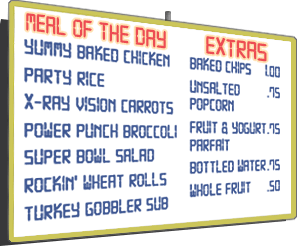
At Jefferson School, Mr. Baker encourages participation in the National School Lunch Program and School Breakfast Program. He puts policies and practices in place to create a friendly, welcoming environment for everyone to ensure that those students who participate in free meal programs are not identified. This action reduces stigma. Mr. Baker worked with Principal Paul to explore different options for providing breakfast to students, including Breakfast in the Classroom, Grab and Go meals, and breakfast after first period. This nutritional boost helps ensure that students are starting the school day ready to learn and better able to concentrate.
Mr. Baker comes up with creative, catchy titles and themes for the menu items. School staff and students can select a hot meal or move through the convenience line for a Grab and Go meal. The menu board shows today’s hot meal, which includes baked chicken, brown rice, “power punch” broccoli, “x-ray vision” carrots, “rockin” wheat roll, and fruit. The Grab and Go meal features the “turkey gobbler,” a turkey sandwich with lettuce and tomato and whole fruit. Low-fat and skim milk are always offered as part of the meal, and students also have access to free water at the water station. The salad bar offers a wide selection of leafy greens, tomatoes, broccoli “trees,” “cool as” cucumbers, and beans. Cheeses and salad toppings are served in smaller containers accompanied by smaller utensils to encourage appropriate portion sizes.
Mr. Baker also promotes menu options during the morning announcements and on signs displayed around the school so everyone is informed about the nutritious choices. A monthly menu is published and provided online so that all students, families, teachers, and administrators. Parents can view the menus in advance and help their children with choices. Students invite their parents to join them for breakfast or lunch meals occasionally.
You can model your school’s meal program to be like the one at Jefferson School. Serve healthy, well-balanced meals and encourage students to participate in the school meal programs. Follow Smarter Lunchroom strategies to make foods more appealing to students. You can use the USDA’s School Breakfast Program toolkit to help you decide the most feasible way to provide breakfast to students. Survey students about their food likes and dislikes, and ask them to create fun names or themes for menu items.
Check out the School Health Team's discussion about recommendations to improve Nutrition Services at Jefferson School.
WSCC Components:
- Nutrition Environment and Services
- Social and Emotional Climate
Lunch tray

Schools are in a unique position to promote healthy eating and nutrition intake. The Jefferson School cafeteria staff works hard to provide nutritious and appealing meals that meet the federal nutrition standards for the National School Lunch Program and School Breakfast Program. Healthy eating in childhood and adolescence is important for proper growth and development. Students who have access to proper nutrition are better able to concentrate and learn in the classroom.
Jefferson School has a farm-to-school program and purchases foods from local farmers when possible. Promoting locally grown items is one way to increase participation in the meal programs. They also have a school garden where students get to learn about growing fruits and vegetables and try the foods that they grow. USDA has a lot of great resource to help with farm to school programs.
School meals are important for helping to addresses hunger and food insecurity. At Jefferson, they allow breakfast in the classroom for the lower grades, and have Grab and Go options for the higher grades. This way students can make sure they get a good breakfast and aren’t forced to skip this important meal because of time.
Your school administration, parent groups, and the community as a whole can work together to support and improve policies related to school nutrition programs. The school nutrition staff can work with the principal and other school staff to ensure that all students who are eligible to receive free or at a reduced rate are enrolled in the school meal programs. The cafeteria can be a meeting place for families to learn about nutrition and for civic leaders to organize collections for food banks. Invite the mayor or a local celebrity to share lunch with students and speak about programs to wipe out hunger in the community.
WSCC Components:
- Nutrition Environment and Services
- Community Involvement
- Family Engagement
Fruit Basket

Mr. Baker places a variety of fresh fruits in a basket near the check-out at a level where students can see them so they can grab fruit to round out their meals. The apples, oranges, and bananas are attractive and appealing because he buys from local fruit growers and suppliers when possible to ensure freshness. It’s an easy sell, and the first step in getting students to think of fruits as the better alternative to sugary or salty snacks.
WSCC Components:
- Nutrition Environment and Services
- Community Involvement
Competitive Foods

Mr. Baker enforces the school’s nutrition policy for all foods and beverages that are available to students at Jefferson School. He focuses a lot of attention on competitive foods, which are those foods sold or available in school outside of federally reimbursable school meal programs. Competitive foods might be sold as a la carte items in the cafeteria, concession stands and fundraisers, or offered to students during classroom celebrations. He met with parents and secured their buy-in to provide nutritious foods instead of sweets for celebrations that included food. He worked with the school administration and staff to do the same in other school venues.
Mr. Baker scouted around for good snack options, read nutrition labels, and contacted local vendors to load the vending machines and a la carte stands in the cafeteria with an assortment of appealing snacks, such a veggie chips and yogurt cups. Healthy snacks have whole grains, low-fat dairy, fruits, vegetables, or protein foods as their main ingredients. These options meet standards of Smart Snacks in School, which are the nutrition standards for competitive foods sold during the school day that are required by the USDA. Mr. Baker developed a pricing strategy to make the healthier foods more appealing by being cheaper. For example, fruits cost less than baked chips.
You can work with suppliers in your area to purchase healthy options for your school’s vending machines, concession stands, and fundraisers. Members of the district wellness committee and school health teams can work together to make food policies consistent across all schools in the area.
WSCC Components:
- Nutrition Environment and Services
- Family Engagement
- Community Involvement
Pedometer Station
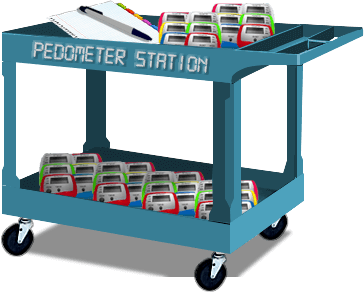
Students in Mr. Rodriguez’s physical education classes make the pedometer station their first stop when they enter the gymnasium. Students wear pedometers that track physical activity time to measure how long they are engaged in activity, tracking the number of minutes that they are active during physical education class. Students try to reach an established goal of percentage of time active during their assigned activities, and set new goals on a regular basis. Classes then discuss why some activities may be much more active than others, and propose strategies for increasing activity time during physical education class.
Mr. Rodriguez knows the importance of properly fitting athletic shoes to avoid injuries, but he realized some of his students were not able to afford appropriate footwear. To help them purchase footwear, he set up a voucher program at the beginning of the school year with help from local merchants and the school athletic association. He provides these students with vouchers so they can purchase discounted athletic shoes at participating stores. Mr. Rodriguez takes great care in respecting each student’s confidentiality when it comes to receiving a voucher. To help ensure participation, he is careful that the students are not singled out for participating in the voucher program.
Explore ways to involve the community and ensure all students have properly fitting athletic shoes and gear. You can establish a voucher program with merchants or ask families to donate to school or community programs, so they can help those students in need while respecting their confidentiality and privacy.
WSCC Components:
- Physical Education and Physical Activity
- Health Services
- Community Involvement
- Family Engagement
Water Station

Mr. Rodriguez ensures all his students drink plenty of water before, during, and after strenuous physical activity so they maintain adequate hydration.
All students have access to safe, free drinking water at the water filling station. Recyclable cups are made available, or the students can fill their own reusable water bottles. Mr. Rodriguez ensures the students’ bottles are labeled with their names, and he encourages them to take the bottles home to be washed daily.
Colorful posters near the filling station promote messages about the health benefits of water, including prevention of tooth decay, the caloric differences between sweetened beverages and water, and water as the optimal beverage to quench thirst.
Mr. Rodriguez often runs promotion campaigns where he invites his students to create posters describing the health benefits and why they like to drink water.
You can promote the habit of drinking water while exercising by installing a water filling station in the gym. Place eye-catching posters near water dispensers to remind students to drink plenty of water. Engage students in water promotion activities to explain why bodies are healthier if they are hydrated.
WSCC Components:
- Physical Environment
- Nutrition Environment and Services
PE Standards Poster

Mr. Rodriguez follows SHAPE America’s National Standards and Grade-Level Outcomes for K-12 Physical Education. He starts the Primary (Grades K-2) students off with the foundational skills, knowledge, and values they need. He teaches the Upper Elementary (Grades 3-5) students to apply those skills, knowledge, and values, and then reinforces them to his Middle School (Grades 6-8) students to encourage them to achieve physical activity throughout their lifetime. His goal is to develop physically literate, confident individuals who choose to be active every day.
Mr. Rodriguez posts daily physical activity challenges to achieve competency in a variety of motor skills. His challenges push the students to elevate their heart rates and build muscles through moderate-to-vigorous physical activity (MVPA). [Standard 1]
He knows his students are applying knowledge of movement and performance concepts as he watches them engaged in cooperative learning when he assigns them to small group work. [Standard 2]
His students use class iPads to access information that enhances their learning as they adjust goals related to their personal physical fitness plans. [Standard 3]
Mr. Rodriguez is proud of the way his students exhibit behaviors that respect self and others, and he encourages cooperation and team-building. [Standard 4]
He knows he has met his goal of instilling the value of physical activity when he sees the enjoyment, self-expression, and social interaction exhibited by his students or listens to his students share about physical activities completed outside of the school day. [Standard 5]
You can develop a list of physical activity challenges with the purpose of engaging students in a variety of motor skills and movement patterns. You can use digital technology to give students access to tools and information about healthy lifestyles.
Check out the School Health Team's discussion about recommendations to improve Physical Education at Jefferson School.
WSCC Components:
- Physical Education and Physical Activity
- Social and Emotional Climate
Climbing Wall

Physical education class is a place where students can learn new activities in a safe instructional environment. These skills can be transferred across many different activities over a lifetime. Mr. Rodriguez wants every student to find a physical activity they like, so he introduces a variety of nontraditional physical activities.
He promotes the climbing wall because it builds teamwork, leadership, and social skills. Climbing activities are equally popular among boys and girls, and students can participate in climbing activities outside of school. At the climbing wall, they practice balance and flexibility skills and work through physical and mental challenges. They gain strength and are better prepared for outdoor recreational activities.
Mr. Rodriguez teaches climbers to use harnesses so they climb safely. Climbers team up with partners, and Mr. Rodriguez explains the role of spotters and belayers in making sure climbing is done safely and ropes are used correctly. This activity also promotes communication skills and supporting others, real-world skills that transfer to many other activities.
The climbing wall has become so popular at Jefferson School that staff can be seen climbing along with students after school. The students and adults form partnerships as they spot each other, and teachers serve as role models. This led Mr. Rodriguez to recruit several parent volunteers to organize a weekend climbing trip for everyone who wanted to participate.
You can collaborate with local facilities to include outdoor recreation and expand physical education options beyond traditional team sports. After teaching the basic skills in physical education class, collaborate with climbing groups to help plan after-school or weekend excursions to local recreation areas.
WSCC Components:
- Physical Education and Physical Activity
- Social and Emotional Climate
- Family Engagement
- Employee Wellness
- Community Involvement
SMART Board
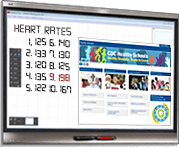
Mr. Rodriguez makes good use of the SMART board in the gymnasium. He posts the daily physical activity challenge on the board so students can engage in physical activity immediately upon entering the gymnasium and help them increase the amount of time they are in moderate-to-vigorous physical activity (MVPA).
Students who select heart rate monitors from the equipment cart wear them to show their perceived exertion related to actual performance, and their heart rates are projected on the SMART board in real time. This encourages friendly competition among the students.
Mr. Rodriguez projects detailed lesson work and sometimes divides the class into small groups for students to engage in cooperative learning activities. In their small groups, the students use the SMART board after their physical activity to document progress. The students take turns using their heart rate beats per minute to determine their target and maximum heart rates.
They also access websites such as the CDC’s BAM! Body and Mind site to obtain information during their lesson. The SMART board’s touch recognition features allow the students to use the different colored pens, as well as other objects or even their hands to write. This allows for accessibility for all Mr. Rodriguez’s students and successfully integrates the technology skills students are learning at school.
You can use a SMART board to encourage instant activity, allow students to access tools and information that enhances their learning on the spot, and engage all students, regardless of their physical abilities.
WSCC Components:
- Physical Education and Physical Activity
- Social and Emotional Climate
- Employee Wellness
Special Events Poster

The gymnasium is a busy place, whether it is during school or after-school hours. Mr. Rodriguez maintains a schedule of open gym times for community events. He advertises use of the gymnasium in the school newsletter and website, local newspaper, and social media networks.
Because of the joint use agreement with the city’s recreation department, recreational sports leagues use the gym for volleyball and basketball practices and games. Thursday nights are reserved for Family Fun and Fitness Night, and families enjoy a variety of free play and fitness activities. These experiences have increased interest in local fitness events and active entertainment.
You can generate community-wide interest in your facilities by staging a Family Fitness Night or other fun activities. Check with school administrators for policies and best practices so you can improve families’ focus on movement and fitness.
WSCC Components:
- Physical Education and Physical Activity
- Community Involvement
- Family Engagement
Technology Cart

Mr. Rodriguez’s technology cart is full of useful equipment. The cart serves as a charging station for school-issued tablets and smartphones used during physical education classes. Other devices, such as the fitness testing station and exergaming pads, are also stored here.
Mr. Rodriguez knows students love active video games , so he makes exergaming activities available to them during lunchtime intramural breaks as a way to promote activity and make physical activity enjoyable.
Students use the tablets to record their physical performance, research skill drills that apply to their assigned lesson work, and access tools and information. They use personal exercise apps installed on the smartphones to monitor their fitness.
Mr. Rodriguez uses technology to take roll, access grade-entering management systems, record assessments, provide interactive lessons, and allow students to share what they have learned. He frequently uses free mobile apps that allows him to collect real-time formative data for quick student assessments.
You can encourage fitness by offering a wide range of physical activities, including those that require technology. Free or low-cost apps are available for many purposes along the instructional continuum. Solicit donations of equipment from local merchants so you can offer a well-rounded program. Seek advice from parents about which physical activities are popular with their children and follow up on their suggestions.
WSCC Components:
- Physical Education and Physical Activity
- Family Engagement
Reward Box

Mr. Gupta keeps a box of little treasures in his classroom so he can reward students for accomplishments and good behavior. The box has stickers, erasers, pencils, ribbons, booklets, and small games, and cards for special classroom privileges or extra recess time.
When he was a young boy, rewards were often candy and other sweets, but school practices have changed. He knows that rewarding students should not involve candy and other foods that can undermine their diets and health or reinforce unhealthful eating habits. He makes sure not to use food treats to reward his students or withhold food to punish them.
A wide variety of alternative rewards can provide positive reinforcement for accomplishments and good behavior. Mr. Gupta offers praises when he sees outstanding effort and lets those students pick the activity for the afternoon physical activity break. Sometimes he rewards students by letting them select and item from the rewards box. School groups such as the Parent Teacher Association can work with parents and staff to donate supplies for the reward box.
You can use nonfood items and opportunities for physical activity to recognize students for their accomplishments and good behavior. For example, you can recognize students during the morning announcements, or display a recognition board in the school hallway to showcase achievements such as those made by students who participated in the 5K run or the walking challenge.
WSCC Components:
- Nutrition Environment and Services
- Social and Emotional Climate
- Family Engagement
Cubby Area

Students in Mr. Gupta’s class love afternoon storytime. They pull their yoga mats and snacks from the cubby area to form a circle around him when he begins telling stories. Some of his students are enrolled in the after-school care program, and he encourages participation in the Afterschool Snack Program. Other students are not enrolled, so combining storytime with snack time ensures that all his students have a mid-afternoon snack.
Mr. Gupta is aware of which students have food allergies, based on their student medical records. These students, as well as some of his other students, usually bring snacks from home. Mr. Gupta encourages parents to pack healthy snacks by regularly sending ideas and easy-to-make snack recipes home with the students.
Providing time for this nutritional boost allows the students to go home without feeling hungry. This will help them concentrate on their homework assignments before dinnertime and deter them from impulsively grabbing junk food. Junk food generally refers to foods that contribute lots of calories but are of little nutritional value. These mini meals, which bridge the time between lunch and supper, are particularly important for students who may have a long wait before they eat their evening meal, or may not have enough to eat at home.
All snacks should meet the nutrition standards outlined in the district’s school wellness policy. You can encourage parents to serve on a school wellness committee to learn about healthy snack options and collaborate with them to supply nutritious snacks in the classroom. You can also involve school clubs and parent organizations to organize a monthly collection to stock the snack bin. Promote the After-School Snack Program so children who stay for after-school care are served healthy snacks.
Check out the School Health Team's discussion about recommendations to improve Nutrition Services at Jefferson School.
WSCC Components:
- Nutrition Environment and Services
- Community Involvement
- Family Engagement
Activity Box
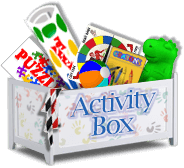
Mr. Gupta noticed some students preferred to sit and talk during recess, rather than run, jump, swing, or use playground equipment. He sought to help them increase their physical activity.
Mr. Gupta asked parents and community merchants for donations to establish an activity box and stocked it with equipment that promotes movement. The brightly colored play items—such as juggling scarves—captured the interest of his students, even the sedentary ones who did not want to miss out on the fun. Now, all students select balls, jump ropes, and other sports equipment from the box before going to recess, and everyone plays actively on the playground.
Some of the activity box items, such as the bean bag toss, are suitable for outdoor or indoor physical activity breaks. At least twice a day, Mr. Gupta gets his students out of their chairs for 10-minute stretching and movement exercises. He pulls items out of the activity box and lets students play games such as Twister, a fun exercise that improves balance, strength, and motor skills. Once they return to their seats, they are better able to pay attention to the lessons and concentrate on their work.
You can fill a box with items to promote physical activity both inside and outside the classroom. Ask local merchants and parents to donate play items and sports equipment. Build anticipation and excitement by planning games before recess starts. Make sure all students are part of the activities and fun.
WSCC Components:
- Physical Education and Physical Activity
- Social and Emotional Climate
- Family Engagement
- Community Involvement
Sink

Mr. Gupta teaches his students how to prevent the spread of germs. At the beginning of the school year, he noticed some students coughed into their hands. Mr. Gupta taught them to cough into their upper sleeves or use tissues to cover their nose and mouth when they cough or sneeze. To avoid the spread of germs and an untidy classroom, he also asked them to dispose of used tissues in the trash can.
Mr. Gupta reminded the boys and girls to rub on alcohol-based hand sanitizer before sharing supplies, and he showed them how to properly wash their hands with soap and warm water. Now all the children clean their hands before eating snacks or lunch and after messy activities. They get lots of practice washing hands after finger-painting sessions!
Mr. Gupta gives lessons on personal hygiene, particularly if he senses the students do not learn these health habits at home. He explains the many ways infections are passed from person to person and shows them how to use disinfecting wipes to kill germs on toys, keyboards, doorknobs, and tabletops.
You can demonstrate proper hand hygiene and keep soap and alcohol-based hand sanitizer in easy reach. Help students establish personal hygiene habits by modeling cough and sneeze etiquette and frequent hand washing.
WSCC Components:
- Health Education
- Physical Environment
Volunteer Desk

Mr. Gupta has many tasks to be completed in a day. Fortunately, parent helpers provide an extra set of hands in his classroom. They do many jobs—from lining up students for lunch to leading physical activity breaks with stretching and movement exercises. Parent helpers also help maintain the school vegetable gardens.
The volunteer desk is the base of operations for parents, family, and community volunteers. Mr. Gupta keeps a volunteer schedule so he always has help in the classroom. Children cluster around the volunteer during study time for extra help in reading or problem solving. Sometimes parents and other volunteers simply give special attention to children who have concerns and need someone to listen to them.
You can create a work station for classroom volunteers. Ask them to assist with tasks and follow up on their suggestions to make lessons more stimulating and invigorating. Recruit parents and other family members via online newsletters and e-mails, and check with senior centers and community organizations for people who want to share their talents and skills.
WSCC Components:
- Nutrition Environment and Services
- Social and Emotional Climate
- Family Engagement
- Community Involvement
Locked Cabinet

One of Mr. Gupta’s students had an unexpected allergic reaction to a food item. Fortunately, Mr. Gupta knew how to handle the incident because he read about the food allergy on the student’s medical record and discussed the possibility of such an incident with the parents and Nurse Okonjo at the beginning of the school year. They had advised him on actions to take should the need arise.
Mr. Gupta follows school policy and keeps up-to-date medical records for all students in a locked cabinet. The medical records help him keep track of students who go to the nurse’s office for daily medications.
Teachers should know which students have documented medical conditions that may require prompt attention. Ask the school nurse and parents for advice on appropriate actions to take if a student with a known medical condition has an emergency. Make sure teachers follow school policy and keep medical records of all students in a locked cabinet.
WSCC Components:
- Health Services
- Family Engagement
Artwork
 Students in Mr. Gutpa’s class completed a healthy habits drawing assignment. Their artwork shows ways to eat nutritious meals, maintain fitness, enjoy physical activity, manage chronic health conditions, and engage family members in healthy lifestyles.
Students in Mr. Gutpa’s class completed a healthy habits drawing assignment. Their artwork shows ways to eat nutritious meals, maintain fitness, enjoy physical activity, manage chronic health conditions, and engage family members in healthy lifestyles.
Mr. Gupta asks each student to make a short presentation about the selected topic, and then he hangs the artwork on the bulletin board. Every month he puts up new artwork they have created. During parent/teacher conferences, he calls attention to the artistic efforts of his students.
You can assign drawing projects to your students and let them pick a health topic of interest. Ask them to prepare a short presentation for classmates. Their artwork can be displayed around the classroom; and, after a month, it can be sent home for display in the family home.
WSCC Components:
- Health Education
- Nutrition Environment and Services
- Physical Education and Physical Activity
- Health Services
- Family Engagement
Water Bottle

Ms. Lewis recognizes the importance of drinking plenty of water to keep the body running smoothly. She encourages her students to bring reusable water bottles from home to keep drinking water handy.
At lunchtime, students refill their containers with ice and water at the water filling station in the cafeteria. Ms. Lewis sets a good example by staying hydrated throughout the day by using her water bottle and drinking water with her lunch.
Reusable water bottles are on the donation list which Ms. Lewis sends to the parents of her students. Students without bottles can reach into the donations box, pick a water bottle, and stay hydrated too.
You can set up a water bottle box at your school. Ask parents or merchants in the community to contribute new water bottles so every student has a water bottle to use.
WSCC Components:
- Nutrition Environment and Services
- Employee Wellness
- Family Engagement
Apple

A bad precedent had been set in Jefferson School. In the past, many parents brought cupcakes and ice cream to share with the class on their child’s birthday. Ms. Lewis also noticed that some parents could not afford to provide snacks on birthdays. She did not like the very sugary treats that were frequently provided for snacks or that some children felt left out.
She was determined to change this tradition to a healthier and more positive celebration, so Ms. Lewis organized Celebration Day. Now, her students enjoy a day when the birthday child receives special privileges, such as selecting the song during activity stretch breaks instead of having a party in which students bring food from.
Ms. Lewis and the School Health Team also recommend that only nutritious snacks be brought by parents for celebrations that do include food, such as cultural celebrations. As an additional option for classroom celebrations, the school cafeteria can provide apples and bananas, if requested a few days in advance.
You can implement “healthy foods only” policies at your school and start a Celebration Day tradition to focus on fun activities instead of food during celebrations. Check your district’s local wellness policies for more guidance on celebrations and parties.
Check out the School Health Team's discussion about recommendations to improve Nutrition Services at Jefferson School.
WSCC Components:
- Nutrition Environment and Services
Bike Helmet

When discussing physical activity with her students, Ms. Lewis was surprised to learn that her students had few opportunities for physical activity before or after school. To help students become more physically active outside of school, Ms. Lewis and the School Health Team organized a Bike to School Program.
She soon realized that not all students were aware of safety rules or wearing bike helmets. Ms. Lewis and the School Health Team organized a bike safety clinic on a Saturday in the school parking lot for students and their parents. Members of the local police department conducted the clinic, and the director of the city Parks and Recreation Department talked about safety issues and provided maps of local parks and biking trails.
It didn’t take long for people to jump on their bikes and ride! The Bike to School Program is just one way to give students the opportunity to be physically active in a safe environment.
You can implement similar programs, such as a Walk to School Program, an after-school dance class, or other physical activity club to promote physical activity outside of school hours.
WSCC Components:
- Physical Education and Physical Activity
- Family Engagement
- Community Involvement
Congratulations Banner

Ms. Lewis understands the benefits of regular physical activity, so she introduced her students to different types of aerobic activity. Examples are walking, running, and bicycling. She switches up activities from one day to the next so students are excited and not bored. Each student picks a favorite activity and exercises often. She knows her students are more likely to make physical activity a lifelong behavior if it is something they enjoy.
Ms. Lewis and parent volunteers organized a fun run for students. The goal was to introduce regular running, jogging, or walking as a fun physical activity. Ms. Lewis, her students, and parents gathered at the high school track at dusk. The track was marked to indicate each quarter mile from the starting point as well as each ½ kilometer. For those new to running and jogging, the 2K run was recommended. More experienced students could choose to run the 5K.
At each ½ kilometer, a a parent volunteer handed the student a glow stick bracelet to wear. Parent volunteers donated the lighted bracelets. As the evening grew darker, the students were proud of their glowing bracelets and continued running to get another bracelet. Ms. Lewis was excited about her students’ accomplishments. She hung a banner in her room to congratulate them on completing the fun run—and, yes, they want to do it again. They are running and jogging on their own to prepare for the next evening fun run.
You can organize a fun run too with the help of parent volunteers and the School Health Team.
WSCC Components:
- Physical Education and Physical Activity
- Family Engagement
- Community Involvement
Clock

Research shows that sitting for long periods can be unhealthy. These studies caught the attention of Ms. Lewis. She wondered why school children are expected to sit for hours.
To ensure her students avoid marathon sitting sessions, Ms. Lewis schedules physical activity breaks. She leads her class in active stretching breaks, dancing to music, and other physical activities such as Tai Chi. Sometimes she shows the students moves she learned in her yoga class. Recess is also scheduled before lunch to help reduce plate waste and increase student consumption of food in the cafeteria. It will also help reduce student discipline referrals.
You can do the same in your classroom by adding physical activity breaks to your lesson plan.
WSCC Components:
- Physical Education and Physical Activity
- Employee Wellness
Laptop

Sometimes, Ms. Lewis feels she has very little time to teach health education. After all, school days are filled with academics, administrative duties, and special assemblies.
Ms. Lewis developed a strategy to help her students learn more about the benefits of good nutrition and physical activity. She introduced them to educational websites and fun games with a health message.
This week, her class is spending time exploring the games and tools available on CDC's BAM! Body and Mind interactive website It is a class favorite!
You can learn about the basics for establishing healthy behaviors by going to CDC’s Healthy Schools website and directing your students to games and other interesting activities.
WSCC Components:
- Health Education
- Nutrition Environment and Services
- Physical Education and Physical Activity
PA Speaker

The morning routine in Mr. Wu’s class starts off with Principal Paul’s announcements over the public address system. This morning, Principal Paul recognized students on the honor roll and leaders of a community service project. He congratulated the football team for its big win and promoted the healthy food choices on today’s menu for the hot meal or Grab and Go lunches. Principal Paul saved his biggest announcement for the close: he announced Jefferson School would be participating in the Healthier US School Challenge to compete for a financial award and be recognized for excellence in nutrition and physical activity. In his announcement, he encouraged all staff, students, and their families to get involved in the school’s Team Nutrition efforts.
Frequently Mr. Wu will reinforce Principal Paul’s announcements and today he followed up with an opportunity for his students to enter a taste-testing challenge to select the grain of the month for the cafeteria’s next menu campaign.
You can interact with your students by offering applause if they made the honor roll or achieved a success and encouraging them to participate in health campaigns. This recognition helps build self-esteem and inspires classmates to do likewise. Also, by promoting extracurricular activities, you can bolster support and involvement in school activities.
WSCC Components:
- Social and Emotional Climate
Community Poster
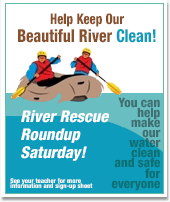
Mr. Wu posts notices of community events on the bulletin board and encourages his students to participate. Service projects give students an opportunity to contribute time and effort to good causes, build leadership skills, and help make them feel good about themselves. Also, they learn new practical skills and benefit from a range of social experiences.
Mr. Wu promotes projects where his students can be physically active, such as picking up trash in public parks or serving as coaching assistants at Boys and Girls Clubs. Mr. Wu knows actions speak louder than words, so Mr. Wu coordinated a class project to do home repairs for Habitat for Humanity. He and his students hauled lumber, painted walls, swept floors, and planted shrubs. He involved parents to gain more support for this large project.
You can connect students to civic organizations that match their interests. Health agencies sponsor fun runs and bike races, and food pantries collect canned goods. Serve as a role model by volunteering to do community projects and share your experiences with your students. Encourage them to volunteer for a school club’s project as a way to promote team building and commitment to improving the community.
WSCC Components:
- Community Involvement
- Family Engagement
- Physical Education and Physical Activity
- Social and Emotional Climate
Clothes Locker
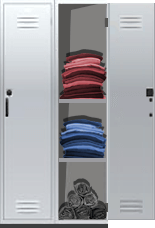
One of the lessons of health education class is maintaining personal hygiene so there is no offensive body odor. All students must change out of their sweaty garments after physical education class to take soiled clothes home for washing.
Occasionally students forgot to bring clean gym clothes back to school, so Mr. Wu established a lending program. Now, Mr. Wu keeps clean gym clothes of various sizes in a locker so students can borrow the clothes and participate in physical education classes. The borrowers are responsible for washing the clothes and returning them to the locker.
You can keep clean gym clothes in various sizes in your classroom so everyone can participate in physical education class, even if clothes were left at home. Support a comprehensive school physical activity program with physical education as the foundation at your school by helping students to achieve at least 60 minutes of physical activity every day.
WSCC Components:
- Health Education
- Physical Education and Physical Activity
Athletic Shoes

The aerobics classes that Principal Paul arranged for staff at Jefferson School were really popular. Mr. Wu decided to take staff fitness to the next level and received permission to take charge of the employee wellness program.
First, he arranged for the staff to take a wellness webinar developed by the city’s health department. Then, he gathered information about smoking cessation from the American Cancer Society, the American Lung Association, and the school’s health insurance provider. He made this information available to staff.
Next, Mr. Wu introduced a weight loss program to support those having a hard time breaking unhealthy eating habits. After receiving approval from Principal Paul, Mr. Wu implemented a rewards program. He turned Fridays into Super Salad Days. Staff members host a salad potluck luncheon and celebrate achievements in reaching wellness goals. Through contacts in the PTA, Mr. Wu located a Zumba® instructor who volunteered to lead a 10-week session in the gym.
You and your coworkers can establish a wellness program at your school with the help of community health organizations. Contact health leaders in your community and ask them to present programs. Survey staff members to find out which physical activities and health topics are of the most interest and organize small groups to meet after school for fitness and other health sessions.
WSCC Components:
- Employee Wellness
- Physical Education and Physical Activity
Student Agenda

Mr. Wu kept looking for better ways to communicate with students and parents. He decided to disseminate the student agenda via e-mail and post it on the class Web page to provide more opportunities to engage parents in their children’s school activities. This planner helps students and parents organize activities and tasks. Mr. Wu incorporated graphics, quizzes, and puzzles to make it more enticing to read. He added reminders about health practices, such as getting plenty of exercise, staying hydrated, and eating a healthy diet.
The student agenda also promotes school events, such as the talent show and a track meet. It lists the contact information of event organizers so parents and students can sign up to volunteer and participate. Mr. Wu includes school rules on the student agenda, and he reminds everyone about services available in the Nurse’s Office and the Counselor’s Office.
You can promote student and family engagement by producing an online weekly or monthly student agenda. It can have a wellness theme and promote good nutrition and physical activity. Also, it can inform parents about school events, services, and policies.
Check out the School Health Team's discussion about recommendations to improve Health Education at Jefferson School.
WSCC Components:
- Health Education
- Nutrition Environment and Services
- Physical Education and Physical Activity
- Family Engagement
- Counseling, Psychological, and Social Services
Teacher Workstation

Sometimes Mr. Wu felt disorganized because his desk held stacks of papers. He changed his work habits and now uses a laptop computer at his workstation to complete most tasks. Now he is more organized about handling his administrative assignments and has reduced his use of paper. He takes roll, enters grades, fills out assessment forms, and completes lesson plans in an electronic format.
Mr. Wu encourages students and parents to visit the class Web page regularly. He enters test dates and assignment due dates on the class Web page. He always puts health messages and the lunch menu on the Web page so students can share this information with their parents. He also suggests ways parents can support learning at home.
Mr. Wu communicates with parents via e-mail. If a conversation is more helpful, he will use his phone or have a person-to-person conference at school. Sometimes he sends written notes for parents home with his students. He wants to encourage parental involvement in students’ learning so he uses the most appropriate means of communication and strives to be culturally sensitive in all his communications.
You can set up a workstation to handle administrative duties. Laptop and desktop computers and phones are essential for organizing tasks and communications. Find the most effective way to engage parents and work toward students’ academic success by supporting learning at home.
WSCC Components:
- Physical Environment
- Family Engagement
- Social and Emotional Climate
Emergency Plans

Mr. Wu serves on Principal Paul’s emergency management team. He coordinates the response for the middle school grades in the event of a fire or weather emergency and makes sure every teacher knows how to responsibly handle their students in such situations.
Last year when a tornado warning was issued by the National Weather Service, Mr. Wu led his students into designated interior shelter areas in a calm and orderly manner. Everyone was instructed to crouch low, head down, protecting the back of their heads with the arms. Once the storm subsided, he led his students back to his classroom. Many students needed reassuring that the danger had passed. He called on Nurse Okonjo and the school counselor, Ms. Kowalski, to assist him in calming students’ fears.
At least once a year, Mr. Wu coordinates a practice drill for the whole school so students know what actions to take if another tornado comes into the area. He posted easy-to-read signs in hallways to direct everyone to interior shelter areas. Also, he organizes fire drills to practice evacuating the building quickly and safely. Mr. Wu talks to his students about all types of emergencies and shows how they can protect themselves from harm.
Last year, Mr. Wu took training classes to learn appropriate actions to take if he is involved with a volatile student. Mr. Wu learned techniques for diffusing an escalating situation and devised a plan to protect himself and others in a crisis situation.
You can work with the emergency management team at your school to practice action plans. Ask mental health professionals to offer training so teachers and counselors can help students feel safe and secure if an event occurs.
WSCC Components:
- Physical Environment
- Health Services
- Social and Emotional Climate
Supervisor Guidance
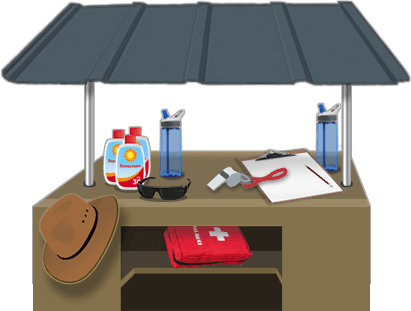
Ms. Antonelli supervises playground activity to ensure safety and the proper use of equipment. Signs with picture messages show age limits and simple rules at the separate play areas. She and other recess supervisors keep young, smaller students away from the play areas meant for older, bigger students. Ms. Antonelli and her staff and volunteers also keep all students in sight at all times.
Many factors determine the appropriate ratio of supervisors to students, including age of students, mental and physical abilities of students, and configuration of the playground. The Supervisor Guidance outlines job responsibilities. In addition to having this Guidance, Ms. Antonelli and other recess supervisors have completed training on effective recess supervision techniques, injury prevention strategies, and developmentally appropriate play.
Ms. Antonelli uses a checklist to inspect play equipment, playground structures, and playground areas regularly for possible damage and calls the school maintenance supervisor when repairs are needed. Together with maintenance workers, Ms. Antonelli and others keep the playground free of trash and hazards.
Ms. Antonelli sets out equipment in activity zones so that students have some planned activities to choose from if they cannot decide what they would like to play. The activity zones are set up around the grid markings, such as four square or geometric shapes, that are painted on the playground hard surface area.
Recess supervisors actively move around the play area to observe, monitor, coach, and reinforce positive behaviors. They also engage in the activities with children to encourage their participation and follow a schoolwide recess schedule that ensures a safe number of students on the playground at all times. The recess supervisors help students apply sunscreen, with parental permission. Students must wear weather-appropriate clothes; clothing with drawstrings is not allowed on the playground. Students have easy access to water fountains so they can stay hydrated during play time.
You can create a safe environment by posting playground safety rules and following supervisor guidance. Share playground safety rules with parents and ask them to volunteer for games and other play activities. Make sure all supervising staff and volunteers receive training on safety and supervision techniques. Repair any equipment with broken, loose, projecting, or missing parts.
WSCC Components:
- Physical Environment
- Physical Education and Physical Activity
- Social and Emotional Climate
- Health Education
- Family Engagement
Adaptive Swing

In an equipment catalog, Ms. Antonelli noticed a pair of adaptive swings for use by students with physical disabilities. She knew several Jefferson School students would benefit from these swings with harnesses and high backs. Ms. Antonelli applied for and received a grant to purchase the adaptive swings and other accessible playground equipment. Then, she organized a community campaign to raise funds to install ramps for easy access to the play area.
After much fundraising and planning, the playground is now an area where students of different abilities have valuable interaction with one another. The swings allow students with physical disabilities to play with their other peers. Students who use wheelchairs can play in the sand by using hand-operated digger tools; they can strengthen their arms in an arcade of pull-up bars. A sensory panel provides engagement for visually challenged children.
Ms. Antonelli discovered ways to modify games so students with limited movement could participate, including turning a long jump rope for jumping children or throwing and catching objects.
You can organize a campaign to install adaptive equipment to ensure all children can have fun together. Raise funds to purchase equipment and cover installation. Install wheelchair-friendly ramps and flooring, and incorporate features, such as raised sand tables and adaptive swings, both suitable for children in wheelchairs or with restricted mobility.
WSCC Components:
- Physical Environment
- Physical Education and Physical Activity
- Social and Emotional Climate
- Community Involvement
Bike Rack

Some students did not want to participate in the bike-to-school program because they were concerned about leaving their bikes unattended during the school day. Ms. Antonelli requested the bike rack to be moved within the fenced playground area and asked local merchants to donate locks so every bike rider had one to use.
Now the bicycles are situated in a secure area. Ms. Antonelli wanted to enforce safety, so she put up a sign with safety rules to remind bike riders to wear bike helmets, ride on the right side with the traffic, and stop at all stop signs.
You can install a bike rack at your school as a way to support a bike-to-school program. Ask parent support groups and local merchants to donate equipment.
WSCC Components:
- Physical Environment
- Physical Education and Physical Activity
- Community Involvement
- Family Engagement
Equipment Cart

Ms. Antonelli saw students sitting and using electronic devices to entertain themselves during recess. She wanted to add more physical activity to their free time. She filled a cart with a variety of balls and sports equipment and persuaded students to grab items for individual play, peer play, and group play.
Now, students are eager to start games or other physical activity. Young students like toys such as hula hoops and jump ropes. Older students often select soccer balls because matches are easily organized and do not require extra equipment. The equipment box also includes Frisbees®, bowling pins and balls, WIFFLE® balls and bats, basketballs, footballs, and badminton rackets and shuttlecocks.
You can fill an equipment cart with all types of sports equipment to make physical activity enticing to students. Equipment can be stored in containers that are easily portable, such as rolling carts or large boxes or tubs with handles. The containers will help keep the equipment clean and organized. Rotate equipment once a month and replenish with new equipment by asking for donations from parents and local merchants.
WSCC Components:
- Physical Education and Physical Activity
- Community Involvement
- Family Engagement
Walking Trail

Jefferson School installed a walking track along the perimeter of the playground as another option for physical activity. Students and staff who participate in the school’s walking challenge and wear pedometers want to accumulate lots of steps every day. Others choose the walking track as a way to energize and socialize. Walking makes the lungs and heart stronger, thus building endurance. The walking path helps spread children across the entire play area and makes use of all the space on the playground.
Ms. Antonelli encourages students with physical and developmental disabilities to be part of the physical and social activities as much as they are able. Some students who use wheelchairs can strengthen their arm muscles by moving around the walking track. This mobility gives them a sense of independence, and they can still socialize while joining their jogging or walking friends.
You can encourage walking by building a walking track or marking a walking route within the fenced playground.
WSCC Components:
- Physical Environment
- Physical Education and Physical Activity
- Social and Emotional Climate
Rules List

Ms. Antonelli greets students with a wave and a smile when they enter the playground area. For many, the playground is their favorite place!
In addition to a big welcome sign, Ms. Antonelli positioned a sign with rules about safety and appropriate behavior. The sign includes picture messages for students who are too young to read. She explains to students how these rules prevent injuries and why courteous behavior is important. She and other recess supervisors enforce rules of conduct with consistency and respond to bullying and other harmful behaviors with fair, appropriate consequences.
Ms. Antonelli created a rules list so parent volunteers and school staff are better informed about the rules. She developed strategies to positively reinforce or reward students who follow rules. Student recess leaders rotate each month to help Ms. Antonelli identify students who are engaging in safe play and including others in their games.
Also, Ms. Antonelli gave guidance about handling misbehaviors such as name calling, teasing, hitting, bullying, or other forms of strife. She suggested ways to keep playground disagreement from escalating into conflicts.
You can create a rules, protocols, and expectations list to create awareness about safety and appropriate behavior. Supervisors can set a goal of having four positive interactions for every corrective interaction. Encourage the student voice by assigning student leaders. Find ways for students to play in harmony so they can work cooperatively when they return to the classroom.
WSCC Components:
- Physical Environment
- Physical Education and Physical Activity
- Social and Emotional Climate
- Family Engagement
Buddy Bench

Ms. Antonelli realized some students had difficulty socializing with others. Perhaps they felt shy or awkward, or they had language barriers. At her request, the PTA installed a Buddy Bench, a seating area where students could take rest breaks, regroup, and talk or play with others. In a short time, this gathering spot fostered new friendships among students. When play groups needed extra people to round out teams, they looked to the Buddy Bench to find someone ready to play.
Ms. Antonelli promotes a positive, respectful social climate on the playground. She finds ways to engage everyone in positive peer groups. Students who use wheelchairs like the supportive interaction at the Buddy Bench. They feel a part of the activity going on around them. Ms. Antonelli and her staff, volunteers, and student recess leaders adapt or devise games so all students can participate to the best of their abilities.
You can install a Buddy Bench or other gathering place to help students socialize and connect with each other. Be creative and invent games and activities so students with different abilities and disabilities can interact with others. All students can set personal goals and focus on their abilities, not their limitations or disabilities.
Check out the School Health Team's discussion about recommendations to improve Counseling, Psychological, and Social Services at Jefferson School.
WSCC Components:
- Physical Environment
- Physical Education and Physical Activity
- Social and Emotional School Climate
First Aid Kit

Nurse Okonjo is always busy. Today, a student came in with a big scrape on his leg because he slid into home plate during a baseball game on the playground. Nurse Okonjo appropriately applied principles of wound care to his injury. . She encourages all students to play sports, stay active, and follow safety rules on the playground, in the gym, and elsewhere.
But Nurse Okonjo does much more than take care of scrapes and bruises. She realizes some students do not have access to adequate medical care and may need support managing their chronic conditions, such as diabetes. Nurse Okonjo steps in to help. She contacts parents and medical professionals to collaborate on ways to improve students’ health. She teaches first aid classes to teachers, nurse aides, and other school staff so everyone is able to help in an emergency.
You can do this too by making referrals to medical professionals and educating parents about actions to take at home to benefit their children’s health and safety.
WSCC Components:
- Health Services
- Physical Education and Physical Activity
Health Poster
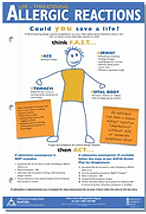
Nurse Okonjo keeps a supply of epinephrine autoinjectors handy for emergencies, such as allergic reactions to bee stings or food allergies. Some middle and high school students carry their own epinephrine autoinjectors, or they bring them to Nurse Okonjo for safekeeping. She keeps a spare in the Nurse’s Office in case a student has an unexpected reaction.
Generally, some of the younger students who have known allergies are comfortable using their epinephrine autoinjectors, sometimes referred to as EpiPens®. Some are afraid, so Nurse Okonjo calms their fears and helps them learn the best way to inject themselves.
She keeps in touch with their parents so she is informed about the students’ allergies and other health conditions. To help parents learn more about allergies, Nurse Okonjo hands out brochures and makes referrals to allergy specialists.
To help classmates understand about allergic reactions to all kinds of things like peanut butter and pollen, Nurse Okonjo made allergic reactions the topic of a recent health class. She worked with the health education teacher, contacted a local allergy specialist, and invited parents to attend the health class. The parents and students had lots of questions. They watched demonstrations on using epinephrine autoinjectors and learned ways to avoid certain foods or unhealthy situations. Nurse Okonjo explained why they should never share food with others.
You can organize a health class for your school and community by contacting allergy clinics in your area and asking for speakers to answer questions and provide brochures and posters.
WSCC Components:
- Health Services
- Family Engagement
- Community Involvement
Glucometer

Diabetes is a big health issue. Several Jefferson School students suffer from Type 1 diabetes, and Nurse Okonjo has noticed a trend where Type 2 is affecting some students. Type 2 diabetes is a growing problem not only at this school, but all across the country, because it is appearing at younger ages than ever before.
Nurse Okonjo wants to turn around the trend. She tells students how to prevent diabetes and connects with their families and others in the community too. She helps students who have been diagnosed with diabetes to manage their condition. She does this for other diseases too, but diabetes education is a priority.
Nurse Okonjo uses the glucometer to test blood glucose levels because students with diabetes need to stay in the doctor-recommended target range. If an emergency like very low blood sugar occurs, Nurse Okonjo has taken special training and knows how to handle it.
Also, she helps students with their insulin injections and pumps. She advises students about their eating habits and encourages plenty of exercise. She asked doctors for handouts and nutritionists for lists of helpful hints for balancing food intake, monitoring carbohydrates, and selecting sugar-free foods so she could provide these to parents.
You can ask your school nutritionist to set up one-on-one learning sessions with students, or you can organize a nutrition fair for students, parents, and community members. Everybody needs to know about healthy eating!
Check out the School Health Team's discussion about recommendations to improve school School Health Services at Jefferson School.
WSCC Components:
- Health Services
- Family Engagement
- Community Involvement
Scale

Nurse Okonjo has noticed that many students are not as healthy or physically fit as they should be. She wants to correct the situation, so she developed a strategy to conduct health assessments for all students. These assessments include weight and BMI calculations.
She reports assessment results to the local health officials to track trends in the health and fitness levels of the entire student population. The health assessments revealed students with eating disorders and obese students who require special attention. Nurse Okonjo assisted these students and their families in taking appropriate corrective actions by helping them establish fitness routines that can lead to long-term healthy lifestyles. She also made referrals to medical specialists.
Nurse Okonjo made suggestions about enjoyable activities, such as joining a dance team, swimming at the community health club, or walking to school and back every day. By working with the students and their families, Nurse Okonjo was able to emphasize that changing bad habits into good ones requires the effort of everyone, not just the individual student. Students need the support of their families, friends, and the community.
You can do the same in your school and community by working to ensure everyone has opportunities for physical activity in a safe environment.
WSCC Components:
- Health Services
- Family Engagement
- Community Involvement
Teeth Model

Nurse Okonjo likes to flash a bright smile when she demonstrates how to brush teeth correctly. She talks about the importance of oral health and conducts dental screenings, just as she does vision and hearing screenings.
Nurse Okonjo urges students to visit a dentist twice a year for checkups and suggests getting dental sealants as a way to prevent tooth decay. Have you heard about sealants? Dental sealants are a plastic resin that is painted onto tooth enamel. The sealants bond to teeth and harden. They protect enamel from plaque and the acids found in foods and beverages. Nurse Okonjo is speaking with the school health team next month about starting a school based sealant program that will be included as part of their health education curriculum. She also plans to speak with the school board and local dentists to coordinate efforts with other schools in the district as well as the community as a whole. Nurse Okonjo will make sure to inform parents about the benefits of dental sealants, and will provide information for them in registration packets along with consent forms. Principal Paul has already offered his help in making sure that the program will be able to identify students who need sealants and other dental care. Those who need additional dental care will then be referred to a local dentist for treatment.
Nurse Okonjo also recommends wearing mouth guards during physical activity, such as football, basketball, and field hockey. She encourages students to avoid soft drinks and sugary snacks.
You can help students maintain healthy teeth by recommending a ban on soft drinks and sugary snacks from vending machines and food stands.
WSCC Components:
- Health Education
- Nutrition Environment and Services
- Physical Education and Physical Activity
Nebulizer

Today, Nurse Okonjo helped a sixth-grade boy who had an asthma episode. He forgot his backpack this morning, and unfortunately he needed the inhaler kept in the backpack. Following orders from his health care provider, Nurse Okonjo gave him a breathing treatment with a nebulizer. This device allowed her to administer medication in the form of a mist inhaled into the lungs. Before the student returned to the classroom, she reminded him of ways to avoid the triggers that can cause an episode. Common triggers are tobacco smoke, dust, mold, outdoor pollution and sometimes exercise.
Nurse Okonjo knows the importance of connecting with students individually to help them establish healthy lifestyles. She also engages their families and others to work together and build a community focused on fitness and health. Also, Nurse Okonjo has inhalers in stock in case of emergencies.
You can make a safe and healthy environment your goal too.
WSCC Components:
- Health Education
- Health Services
- Physical Education and Physical Activity
- Family Engagement
- Community Involvement
Community Poster

Nurse Okonjo wanted to spread the word about healthy lifestyles, so she organized a health fair at the school recently. It was for everyone: students, teachers, parents, grandparents, neighbors, and friends.
She sent invitations to Boys Clubs, Girls Clubs, the YMCA, and lots of other groups to ensure community members knew of the event. She lined up programs about asthma, diabetes, epilepsy, and other chronic diseases. She invited doctors, dentists, public health leaders, and nutritionists to give talks and demonstrations on these topics. They answered questions and handed out materials for people to take home.
Leaders from the city’s parks and recreation department promoted the use of exercise paths and fitness equipment at recreation centers. They suggested ways to spend family time at community parks, sports fields, and swimming pools. The health fair was a big success and will be held again next year.
With the help of volunteers, you can organize an event in your community and create a better environment for health and physical activity.
WSCC Components:
- Health Education
- Health Services
- Nutrition Environment and Services
- Physical Education and Physical Activity
- Family Engagement
- Community Involvement
Locked Cabinet

Nurse Okonjo has a record of all students with chronic health conditions, including seizure disorders. If a seizure occurs at the school, she can act immediately. She has special training and remains calm and confident in these situations, which may be frightening to classmates.
To help everyone at Jefferson School understand the disorder, Nurse Okonjo asked the parents of students with seizure disorders to host a discussion about what they do in their homes to treat and manage their child’s condition. She invited a neurologist to visit the school and explain what triggers seizures and what medicines are used for treatments and their possible side effects. The session was very helpful to students, school staff, and parents.
On a more individual level, Nurse Okonjo provides guidance to each student with a seizure disorder about management and making good lifestyle choices, such as getting enough sleep and lowering stress. She encourages students with seizure disorders to participate in sports because exercise and physically fitness may lessen risks of seizures.
You can learn more about seizure disorders and work to ensure the school nurses in your community have proper training.
WSCC Components:
- Health Education
- Nutrition Environment and Services
- Physical Education and Physical Activity
- Family Engagement
- Community Involvement
Phone

After counseling a sixth-grader with emotional problems, Ms. Kowalski determined the student should seek counseling outside of school. She spoke with the parents and provided information for a social services agency that was well-suited to meet the student’s needs.
Ms. Kowalski checks in with the student periodically and contacts the parents as additional school concerns arise and works with them in various ways to ensure the student can be successful in school. She meets with parents in person, or she e-mails or phones them if they are not able to come to her office.
You can support the efforts of school counselors by making sure they have adequate resources and equipment to serve the needs of students and implement comprehensive school counseling programs. School counselors may need some flexibility in their schedules.
Check out the School Health Team's discussion about recommendations to improve Counseling, Psychological and Social Services at Jefferson School.
WSCC Components:
- Counseling, Psychological and Social Services
- Family Engagement
- Health Services
- Physical Environment
Bulletin Board

Ms. Kowalski knows students deal with a lot of stress that can sometimes be overwhelming. She wanted to reinforce the positivity in the world, so she created a bulletin board to accentuate the good things at the school and in the community. Also, she used the bulletin board to emphasize growth mindsets that students need to develop coping skills and resiliency.
She encouraged students to add their own uplifting thoughts and drawings to the bulletin board, and she posted growth mindset messages and pictures. Some of the students’ messages and drawings were created through classroom guidance lessons.
In a short while, the bulletin board gained a lot of attention because students liked the positive messages. Every month, Ms. Kowalski selects a theme for the bulletin board and highlights particularly relevant messages.
You can affirm the positive at your school and community by setting up a Wall of Positivity bulletin board and incorporating growth mindsets. Establish a supportive learning environment and help students understand the skills they need to develop coping skills and resiliency.
WSCC Components:
- Counseling, Psychological and Social Services
- Social and Emotional Climate
Art Easel

Art easel, paints, crayons, chalk, and markers may seem like they belong in the art room, but they can fill an important function in the Counselor’s Office. Students can create art works to convey their feelings and emotions. Painting and drawing can be effective communication methods, especially for students who have difficulty with verbal communication because of physical, cognitive, or mental challenges.
Ms. Kowalski learned about art as a school counseling tool at a professional conference and began using it at Jefferson School. She engages students in art activities to help them express concerns which they may have difficulty communicating verbally.
You can introduce art as a form of self-expression in individual or small group sessions, or in classroom guidance lessons. Provide opportunities for counselors to pursue school counseling-specific professional development training so they have updated and well-rounded skills for implementing comprehensive school counseling programs that benefit all students.
WSCC Components:
- Counseling, Psychological and Social Services
- Health Education
Storage Shelf
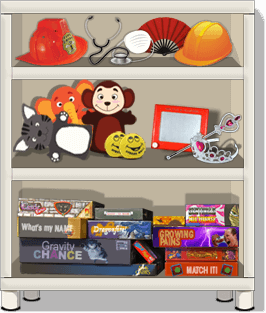
Puppets, board games, and other toys are items that can help students feel more at ease in the Counselor’s Office. Sometimes Ms. Kowalski plays board games with students as a way to encourage them to open up and talk through their problems. She also uses board games in small groups that address social and emotional issues, student skills, or career exploration. Toys and games can help build a communication connection between counselors and students who may be shy or reluctant to reveal their feelings.
Older students grab stress balls, while younger students use toys and costumes for role playing or moving around the Counselor’s Office. The physical activity—even if it is simply keeping hands busy—can help minimize anxiety.
You can reduce students’ stress by making the Counselor’s Office a welcoming environment. Ask community organizations to donate toys and board games that stimulate interaction or serve as conversation starters. Make sure the school counseling department has funding to purchase developmentally appropriate games and toys.
WSCC Components:
- Counseling, Psychological and Social Services
- Physical Education and Physical Activity
- Community Involvement
Bookshelf

Ms. Kowalski maintains a well-stocked lending library of books, DVDs, and audiotapes on topics related to academic, career, and social and emotional development. These resources provide guidance on advancing academically, establishing personal goals, and developing future plans. The resources also address the behavioral, mental, and emotional health of students.
The bookshelf has plenty of “how to” guides on setting goals, nurturing special talents, and establishing healthy lifestyles. Topics also include anger management, personal safety, violence prevention, and substance abuse. The books, DVDs, and audiotapes offer guidance to Ms. Kowalski and all educational staff members.
Students, parents, and staff borrow these resources to help them address problems or barriers to learning and general well-being. The books and DVDs can suggest ways to promote student achievement and solve behavioral issues in the classroom.
You can build a resource center to reinforce student well-being and learning. Many materials are available from publishers that specialize in school counseling. Some community organizations may have resources to donate that can help stock the lending library.
WSCC Components:
- Counseling, Psychological and Social Services
- Family Engagement
- Health Education
- Employee Wellness
- Community Involvement
Computer

In several classroom guidance lessons, students revealed incidents of cyberbullying. Ms. Kowalski developed a student survey to find out the pervasiveness of cyberbullying and then decided to create an intervention based on the results.
She organized a “Caught in the Web” Internet safety event which featured a panel of experts: a mental health provider, a representative from the local police department, and an information technology professional.
The after-school event was open to the public and heavily promoted to attract students and their families. Serving as moderator, Ms. Kowalski guided the panel discussion to focus on how students can navigate safely and handle bullying on the Internet. Parents posed questions about setting up controls on their home computers. They asked about law enforcement support and emerging threats to computer security. The mental health provider offered guidance on building self-esteem and avoiding unfavorable social interaction on the Web.
Following the panel discussion, Ms. Kowalski gathered up extra leaflets and brochures from members of the panel and put together packets to send home with students for parents who did not attend the after-school event. She also developed a classroom guidance lesson on cyberbullying and delivered a presentation during a PTA meeting so more parents could find solutions for cyberbullying.
You can coordinate a “Caught in the Web” Internet safety event for your school and community by working with parent support organizations, the local mental health association, and police department. A panel of experts may include computer security professionals, social media communications specialists, mental health counselors, and law enforcement personnel.
WSCC Components:
- Social and Emotional Climate
- Counseling, Psychological and Social Services
- Family Engagement
- Community Involvement
Door Sign

Ms. Kowalski found out students sometimes felt uncomfortable when they entered the Counselor’s Office because of fear that others would think they were in trouble or had serious issues. She requested a less noticeable location for her office. Now students have a certain level of privacy because they do not have to pass in front of teachers and other students when they come to meet with the counselor.
Ms. Kowalski provides a quiet, comfortable environment and ensures uninterrupted conversations by hanging a sign on the window of her door: “Counseling in Progress — Please Do Not Disturb.”
You can select a location for the Counselor’s Office which affords a level of privacy. The space should be large enough so parents or small groups of students can gather. Create a relaxing setting so participants feel at ease.
Check out the School Health Team's discussion about recommendations to improve Counseling, Psychological and Social Services at Jefferson School.
WSCC Components:
- Social and Emotional Climate
- Counseling, Psychological and Social Services
- Physical Environment
Diversity Poster

Over the past few years, Jefferson School’s student and staff populations have become more diverse. By analyzing school data, Ms. Kowalski identified this trend and has incorporated lessons on tolerance throughout the counseling program.
One of her actions was to place posters in her office and around the school showing diversity and tolerance. The posters’ themes relate to accepting and building relationships with people who are from varied cultures, religions, and ethnic backgrounds. She knows adolescent students may have concerns about body image, so she displays posters that encourage acceptance of all body types and genders.
In addition to her use of posters, she communicates inclusion when she engages with students in counseling sessions, in classroom guidance lessons, and throughout the comprehensive school counseling program.
You can build a social environment that is supportive of diverse student and staff populations by championing respect, inclusion, acceptance, and understanding. Promote these attributes throughout the school counseling program, schoolwide campaigns, and day-to-day actions.
WSCC Components:
- Social and Emotional Climate
Facility Schedule

Principal Paul sought more engagement among families, community members, and Jefferson School, so he announced the availability of school facilities in community bulletins and social media networks. Now, the Parent Teacher Association has regular meetings at the school, and it sponsors special events such as Career Day. Youth clubs and athletic associations now use the gymnasium for youth leagues. Civic organizations book the conference room for their meetings. Principal Paul has collaborated with the community to sponsor several community events, including 5K runs and health fairs. The school has become a community hub by allowing others to use the facilities.
You can generate community-wide interest in your school by allowing civic organizations to use your facilities. Support the Parent Teacher Association by offering to host events. Consult with school principals and superintendents about their experiences with community meetings and best practices for engagement with families and civic organizations. Ask the local school board administrators about policies regarding facility use.
WSCC Components:
- Community Involvement
- Family Engagement
- Physical Environment
Emergency Toolkit

Principal Paul ensures Jefferson School has action plans in case of an emergency. Public health emergencies include such things as flu epidemics. A tornado or flash flood is considered an environmental emergency. Also, Principal Paul has action plans for workplace safety emergencies. The step-by-step action plans are kept in notebooks in his office and are distributed to staff.
Principal Paul realized any emergency requires coordination of all staff. He established training classes and drills so the staff knows what to do in an emergency. Emergency management leaders in the community staged training exercises at the school and explained how, during an emergency, staff can find the most up-to-date information via emergency notification systems and social media channels, such as Twitter and Facebook.
Principal Paul is prepared for emergencies in other ways. He and other staff members know how to use the automated external defibrillator (AED) located near his office. Principal Paul has assigned handheld transceivers, also called walkie-talkies, to key staff. He uses his walkie-talkie during fire drills and shelter-in-place practice exercises. In these situations, he can communicate with school administrators and teachers to account for all students and ensure everyone is safe. On a more routine basis, Principal Paul and the building manager use walkie-talkies to stay in touch with the front office when they are moving about the buildings and school grounds.
You can contact emergency management officials in your area to assist with developing action plans to handle a full range of emergencies. Training exercises will help staff members gain confidence in their actions and solidify their knowledge of protocols. You can encourage staff to sign up for announcements from emergency notification systems and social media.
WSCC Components:
- Physical Environment
- Health Services
- Community Involvement
- Employee Wellness
Attendance Chart

Principal Paul knows the value of data. He compared last year’s school attendance records data with this year’s data and felt certain the focus on healthy eating, physical activity, and providing access to health services to help students with chronic health conditions was making a big impact at Jefferson School. He noticed a downward trend in absenteeism and tardiness, which appeared to begin just after he and the staff took decisive action to support and promote health and wellness across the school.
He and Nurse Okonjo created a chart showing a composite of attendance records over the past five years and shared the overall data with staff, parents, and the school board via e-mail. As a way to engage parents and school board members, Principal Paul solicited input about ways to keep attendance levels high. Because health and wellbeing factors play a major role in absenteeism, the Superintendent of Education was confident Jefferson School’s ventures played a meaningful role. She considered Jefferson School a success story and recommended Principal Paul present the data at the upcoming leadership conference of the National Association of Elementary School Principals.
You can find ways to evaluate health and wellness programs at your school. Comb through data and identify trends. Promote your successes so parents and community members understand how positive lifestyle changes can make a big difference in wellbeing.
WSCC Components:
- Health Services
- Nutrition Environment and Services
- Physical Education and Physical Activity
- Family Engagement
- Community Involvement
Standing Desk

Principal Paul realized he was spending too much time sitting when he was in his office. At the start of the school year, he installed a height-adjustable desk in his office and approved the purchase of height-adjustable desks for staff and teachers. Now, he and others alternate between sitting and standing at their desks. Standing at the desk causes the heart to beat faster than sitting does, so they are burning extra calories. Also, changing positions has many health benefits. It improves blood circulation and alertness, and it decreases shoulder and back pain. Principal Paul paces purposefully in his office while talking on his telephone as a way to get a few more minutes of exercise.
Principal Paul keeps reusable water bottles and nutritious snacks at his desk and maintains his weight at a healthy range. He asked the cafeteria staff to place fruit and water bottles in the conference room, teachers’ lounge, and other work areas for staff. He knows he is a role model and is setting a good example for everyone at the school—students and staff alike. When he went to the doctor recently for a physical exam, tests showed he has improved his cholesterol levels.
You can avoid sedentary work habits by using a desk with standing options. Find innovative ways to move about the office, classroom, or work areas. Make sure everyone has access to water and healthy snacks.
WSCC Components:
- Employee Wellness
- Physical Environment
- Physical Education and Physical Activity
- Nutrition Environment and Services
Awards & Art

Principal Paul values the artistic talent and creativity of his students and proudly displays their artwork in his office. He started a monthly art contest to encourage originality in design. The winning entries are placed in his office and around the school building. Students feel good about their achievements and frequently invite family members to the school to see their prize-winning art on prominent display.
Principal Paul is also proud of the awards Jefferson School has received because of its accomplishments. Over the years, students and staff developed valuable partnerships in the community, such as collaborations with the 4-H Club and shared use of the gymnasium and playground. These efforts have brought recognition to the school. The Jefferson School Health Fair received an award from the local Department of Public Health. Principal Paul was voted “Principal of the Year” in the state for his efforts to improve the school.
You can recognize achievements by showcasing projects and accomplishments. You can sponsor art shows, science fairs, and sports tournaments and develop partnerships with organizations such as Junior Achievement, Kiwanis Club, and Rotary Club. Award ceremonies are one avenue to promote stellar effort; however, words of praise are just as meaningful. Administrators, teachers, and staff can show by words and actions the value they place on individual effort and creativity.
WSCC Components:
- Social and Emotional Climate
- Family Engagement
- Community Involvement
Clock

When the clock shows 8:30 a.m., Principal Paul starts the day with announcements. He runs a smooth operation by keeping classes and breaks on an efficient schedule. Before school, many students participate in the School Breakfast Program. Students are encouraged to go to the cafeteria for breakfast before classes start. For those students that can’t get to the cafeteria in time to eat breakfast, Jefferson provides a couple second chance options. For lower grades, they do breakfast in the classroom while the higher grades have Grab and Go options. He schedules at least one hour of physical activity every day for students and makes sure there is time for physical activity outside of PE class.
You can structure your school day around an efficient schedule the same way Principal Paul has. Keep in mind recommended guidelines for physical activity, meals, and social breaks between classes.
WSCC Components:
- Physical Environment
- Nutrition Environment and Services
- Physical Education and Physical Activity
- Social and Emotional Climate
Gym Bag & Shoes
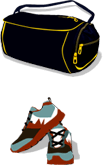
Principal Paul joins students and other staff in the after-school running club. The exercise keeps him fit and relieves stress. He likes the friendly interaction and competition as runners prepare for the upcoming 5K event. If the students beat him in the race, he agrees to wear bright yellow shorts to work the next day!
Principal Paul knew that some staff members did not take time to exercise. He encouraged them to join the running club too, but some did not like to run. He conducted a staff survey to determine interests and realized aerobics and yoga were popular. Principal Paul coordinated with the local fitness club, which provided fitness instructors for a free 10-week session of classes in the school gymnasium. He knows people will stick with the exercise programs they like best.
You can promote employee wellness by offering different opportunities for exercise. Contact a local fitness club and negotiate for discounted memberships. Staff members can support each other and engage in friendly completion.
Check out the School Health Team's discussion about recommendations to improve Physical Education at Jefferson School.
WSCC Components:
- Physical Education and Physical Activity
- Social and Emotional Climate
- Employee Wellness
Open Door

One morning, Principal Paul did not have any meetings or pressing deadlines scheduled. He spent the time standing in his office doorway and talking to students and staff as they walked by. Since then, he has expanded his open door policy. He discusses concerns in an informal manner and offers guidance. Of course, students come around to tell jokes and share good news too. They know he will applaud their achievements and support them through the ups and downs of life.
Word has spread to parents and community leaders, and Principal Paul has gained a reputation for being a good listener and the go-to guy for answers. He is now planning to have a “non-office” afternoon each week so he can go visit classes and meet more students.
You can create a positive social and emotional climate at your school by promoting communication and interaction. Staff, parents, and community leaders can produce better results when they have the support of administrators who listen to their concerns and work with them to find solutions.
WSCC Components:
- Social and Emotional Climate
- Community Involvement
- Family Engagement
Health Education
The School Health Team completed each module of the School Health Index (SHI) to conduct an assessment of the health policies and practices at Jefferson School. Mr. Rodriguez, our physical education teacher, Ms. Okonjo, the school nurse, and Mr. Tatum, the health educator from the local health department, focused on SHI Module 2: Health Education. They identified strengths and weaknesses in Jefferson School's health education program based on the results of the module score card, and then they developed an action plan to recommend improvements.
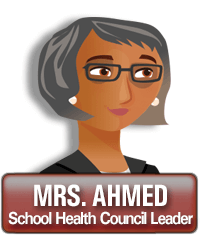
Good morning, everyone. Nurse Okonjo, Mr. Rodriguez, and Mr. Tatum, a health educator from the local health department, have reviewed and assessed our health education program as part of our overall assessment of Jefferson School's health policies and practices. They used the Health Education module of the School Health Index to complete their assessment. Nurse Okonjo, Mr. Rodriguez, please present your findings and recommendations to the rest of the team.

Thank you, Ms. Ahmed. The results of our assessment of the health education program show that we have room for improvement. Mr. Rodriguez and I plan to bring in two middle school teachers and one of the health educator instructors from the state university to help develop a new health education curriculum for Jefferson School.

Sounds like a big job!
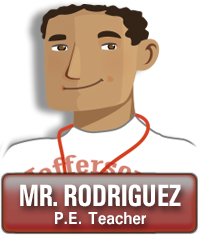
It will be challenging, but there are resources available to help us develop the curriculum. We will use the National Health Education Standards, CDC's Health Education Curriculum Analysis tool (HECAT) CDC's School Health Guidelines to Improve Healthy Eating and Physical Activity, and curriculum frameworks from neighboring school districts to help shape our work.

Will health education be offered to all grades at Jefferson School?

Yes. The new curriculum will be developed to provide health education for all students for nine weeks in each grade 6 and 7 and for one semester in grade 8. We will ensure the curriculum addresses the major health problems and risks that students at Jefferson school face and that it is developmentally and culturally appropriate.

I appreciate your dedication to developing a comprehensive health education curriculum, but I don't have the knowledge or experience to teach health education.

Mr. Rodriguez, Nurse Okonjo, and I have discussed how we will implement the new curriculum. Mr. Rodriguez has the training and qualifications to teach health education. He will provide some health instruction for grades 6 and 7. Starting next fall, we will be able to share a health education teacher with Jupiter High School. That teacher will teach the semester 8th grade health class. We will train the rest of our staff during an in-service day on health education and work on reinforcing the concepts taught in our health classes.

What information does the health education curriculum include?

The curriculum will include information on healthy eating and nutrition, physical activity, safety and injury prevention, personal health and wellness, mental and emotional health, drug and alcohol use, tobacco use, and violence prevention. In grade 8, the curriculum will also include sexual health education.

This sounds like an ambitious plan of action! How can you be certain your curriculum will meet our students' needs?

Good question! We will develop the curriculum using CDC's Health Education Curriculum Analysis Tool (HECAT), which will help ensure we are focusing on the right information and skills. The HECAT also helps us ensure we are using science-based principles to improve health practices and are flexible in accommodating different values, cultures, and priorities. We will also engage school staff, parents, and community members in the review and approval of the new curriculum. The curriculum will be approved by our school board before teacher training and health instruction begins.

I'm sure I speak for everyone on the Team when I say that I look forward to the new curriculum, and I know it will have a very positive impact on the health and well-being of Jefferson School students. Thank you for lending your time and expertise to this effort!

If you want to learn more about the School Health Index, visit the Healthy Schools website. For training, visit the Professional Development page.

For more information on health education, see:
Health Education Curriculum Analysis Tool (HECAT)
National Health Education Standards (NHES)
Characteristics of an Effective Health Education Curriculum
Nutrition Services
The School Health Team completed each module of the School Health Index (SHI) to conduct an assessment of the health policies and practices at Jefferson School. Mr. Baker, our nutrition services manager, focused on SHI Module 1: School Health and Safety Policies and Environment and Module 4: Nutrition Services. He identified strengths and weaknesses in Jefferson School's nutrition environment and services based on the results of the module score cards, and then he developed an action plan to recommend improvements.

Good morning, everyone. Mr. Baker has reviewed and assessed our nutrition environment and services as part of our overall assessment of Jefferson School’s health policies and practices. He used the Nutrition Services module of the School Health Index to complete his assessment. Mr. Baker, please present your findings and recommendations to the rest of the team.

Thanks, Ms. Ahmed. The results of my assessment revealed several areas for improvement. Two years ago, we were on the wrong path with the competitive foods that were available at Jefferson School. We sold a variety of less-than-nutritious foods as a la carte items in the cafeteria and at concession stands. These foods were also promoted at fund-raisers, brought to classroom celebrations, and provided during after-school programs. After completing the SHI modules, we developed an action plan to make all food options more nutritious and of better quality. We have already implemented new strategies across Jefferson School.

I have noticed the recommendations from my child’s teacher to switch from salty, high-fat snacks to more nutritious options when they have a celebration where students are allowed to bring in food. I’ve noticed they try to do as many food-free celebrations as they can.

Yes! We have been working on nutrition changes throughout the school over the past year. We focused on ways to upgrade the a la carte offerings during lunch service in the cafeteria by making vegetables more appealing with catchy titles and visually pleasing presentations of the foods. Also, we strategically positioned the more nutritious options in the lines. For example, we put fruits in baskets where students could see them easily and moved the white milk in front of the chocolate milk in the coolers.

What about the foods available at concession stands during after-school activities?

Another step in the action plan was to meet with parents and booster clubs to share with them our goal to improve all foods available on campus, including the snack foods sold at games and the party treats at classroom celebrations where there is food. Most were in agreement with the changes and had suggestions for how to make it work, but some wondered if fundraising would suffer.

Yes, we worried about that too, because we depend on concession stand sales to support our athletic programs. We found out that sales did not drop when we replaced unhealthy food items, such as cheesy nacho chips, with more nutritious foods, such as air-popped popcorn. After a short time, sales improved because people liked the healthier choices.

Parents and people in the community gave us new ideas for fundraisers. Instead of selling doughnuts and chocolate bars, now we are fundraising with coupon sales books and evergreen wreaths during the December holiday season. Also, we made a huge effort to follow the guidance in the Nutrition Environment and Services component of the WSCC model. We are pleased with the changes we made last year in our nutrition services, and I’m sure we will see improved scores on our SHI score card when we reassess next year.

Did this year's score card show other areas for improvement?

We still have too much fat in some food options. Crispy chicken strips are favorites, yet they contain unhealthy amounts of fat. We are finding better ways to prepare food favorites.

Fried foods are usually high in cholesterol that can lead to heart disease later in life. Now is the time to establish healthy eating habits. What is your solution?

We are upgrading the kitchen equipment so we can improve our food preparation practices. Roasting racks will help us drain fats from meats and chicken. With our new steam-jacketed kettles, we can prepare soups from scratch efficiently and no longer have to buy ready-made soups which tend to have high sodium content. A chef will train us to adjust recipes so they have less fat and sodium. For example, a chef will help us develop herb seasoning mixes to use on chicken strips, vegetables, and other foods so we can serve them with less salt. We will also put herb seasoning mixes in shakers so students can flavor other foods.

That's a big improvement! What else will you do?

We are purchasing blenders so we can add fruit and vegetable smoothies to the breakfast and lunch menus. Fruit and vegetable smoothies are popular among students. We had faculty and students do some taste testing of items we were considering for our menu, and the smoothies were one of the highest among those tested. Along with the blenders, we also purchased sectioners to make it easier to cut the fruits and vegetables for the salad bar and other menu items. After our training with the chef, we will continue to do taste testings with students and faculty as we continue to search for recipes with more fruits, vegetables, and whole grains.

I think many students will participate in those activities. In previous meetings, we had discussions about inviting a student representative to serve on the School Health Team. The newly selected student should be joining our meetings in the near future.

That’s exciting to hear that the student will be joining our team, and about the kitchen’s new equipment as well. Mr. Baker, will you provide training for the food services staff on using the equipment properly?

Our district will be doing a culinary “boot camp” for all kitchen food staff to train them on a wide array of topics including knife skills, safety, cleaning, and using the new equipment.

Speaking of training, we need to make safety training part of the professional development of the food services staff. The staff needs to know how to avoid personal injuries in the kitchen area and the cafeteria.

Yes, we have a series of courses planned for the food services staff. The first in the series is a course to cover general health and safety concerns.

That's a great idea. That way, they will be trained to handle emergencies, such as giving first aid if a student chokes on food or has an allergic reaction to food.

There is also a course in emergency planning training. Staff will know what to do if the power goes off, causing the refrigeration units to shut down, or if the school turns into a community shelter during severe weather emergencies.

We are well on our way to increasing our capacity to handle emergencies by following the guidance in the Physical Environment component of the WSCC model. Also, we are continuing to follow the guidance in the Nutrition Environment and Services component of the WSCC model. By staying focused on the well-being of our students, we continue to build and sustain a healthy school environment at Jefferson School.

If you want to learn more about the School Health Index, visit the Healthy Schools website. For training, visit the Professional Development page.
School Health Services
The School Health Team completed each module of the School Health Index (SHI) to conduct an assessment of the health policies and practices at Jefferson School. Nurse Okonjo, the school nurse, focused on SHI Module 5: School Health Services. She identified strengths and weaknesses in Jefferson School's health services based on the results of the module score card, and then she developed an action plan to recommend improvements.

Good morning, everyone. Nurse Okonjo has reviewed and assessed our school health services program as part of our overall assessment of Jefferson School’s health policies and practices. She used the School Health Services module of the School Health Index to complete her assessment. Nurse Okonjo, please present your findings and recommendations to the rest of the team.

Thanks, Ms. Ahmed. Two years ago, Jefferson School started seeing its first cases of Type 2 diabetes or prediabetes. We also noticed students who had been diagnosed with Type 1 or Type 2 diabetes struggled to manage their condition while at school. We needed to find ways to help them understand how their diets affected their bodies, how to monitor their blood glucose levels, and increase their physical activity. As a result of our assessment, we developed an action plan to increase student participation in the management of chronic diseases, such as diabetes.

What were some of the items in your action plan to help students monitor their diabetes?

We equipped the nurse’s office with glucometers to test blood glucose levels of students. More importantly, we showed them how to use the glucometers and how to read the results so they would feel confident using such equipment at home or elsewhere. We also taught them about appropriate disposal of blood-contaminated test strips and proper handwashing techniques.

What about helping students live with their diseases?

That’s another improvement we made. I worked with Mr. Baker and Mr. Rodriguez to set up sharing and information sessions with the students. We covered topics such as making healthy food choices and monitoring the intake of carbohydrates, as well as the importance of being physically active. Parents of the students were invited to attend these sessions too.

We followed the guidance in the Health Services component of the Whole School, Whole Community, Whole Child (WSCC) model as we worked through implementing the improvements.

We are pleased with the changes we made last year in health services. We are sure that when we reassess next year, we will see improved scores on our SHI score card.

Did this year's score card show other areas for improvement?

Yes, we built up our strengths in specialized health services last year, but we have room for improvement. We need to build greater awareness of how to manage food allergies because we are seeing more and more elementary school-aged children who suffer with allergies. We not only need to promote the health services we offer if a student has an allergic reaction, but also increase awareness of precautions they can take to minimize the risks of exposure to foods that can trigger allergic reactions.

You do a good job of promoting health services through events like last year’s school health fair for families and the community. I learned a lot at the fair because doctors in the community gave excellent presentations on managing chronic diseases such as diabetes and taking precautions to avoid allergic food reactions.

While I was working one of the booths, I heard several people comment about learning something new from the speakers. I noticed a lot of families picked up brochures at the different booths.

The first school health fair was well attended by parents and community members, so I have scheduled another one for this fall. It will be bigger and better! At the center, we will have a large booth staffed by doctors, nutritionists, and physical fitness experts to provide information about nutrition, fitness, and managing chronic health conditions.

As part of the teaching staff, I want to learn too. I would like to know how to use glucometers, what to do if a student has an allergic food reaction, and how to detect signs of distress. I want to be trained to help students who may be experiencing an emergency.

I think everybody wants to gain a better understanding about managing chronic conditions, and we will be able to provide more professional development in the future for our staff. Under Title II of the Every Student Succeeds Act (ESSA), we will be able to receive funding to help train our staff to better recognize our student’s health needs and make sure those needs are met. Until that funding is available, I will lead a hands-on exercise with some of our equipment, plus some students who are living with chronic health conditions will share their personal stories at the training. I will also ask Ms. Kowalski in the Counselor’s Office to set up sessions with these students so they can learn to develop coping skills and resiliency. She will help them express their concerns, establish personal goals, and learn how to make wise choices.

Getting Ms. Kowalski involved sounds like a good idea. Will parents be invited to participate in these sessions?

Absolutely! I want students, staff, and parents—everyone— to be on board in helping to manage chronic health conditions at Jefferson School.

That means as teachers we have to talk about it more often and set good examples. Teachers need to model their commitment to wellness by eating properly, maintaining a healthy weight, exercising regularly, and staying physically fit. I will organize a challenge and ask the staff, students, and their families to sign up to walk one million steps in 90 days.

The community can support this and join in! Perhaps merchants can donate pedometers and sports gear for incentives.

Everyone at Jefferson School will work very hard to promote greater awareness of managing chronic diseases such as diabetes. We are building upon our action plan from last year to enhance our activities. We will follow the guidance in the Health Services, Family Engagement, and Community Involvement components of the WSCC model. In doing this, we realize just how busy Nurse Okonjo is every day, especially when you add in that she rotates between Jefferson School and two other schools in our district. Fortunately, when we obtain ESSA funds, we will be able to hire Nurse Okonjo full time here at Jefferson School now that we have completed our assessment.

If you want to learn more about the School Health Index, visit the Healthy Schools website. For training, visit the Professional Development page.
Physical Education
The School Health Team completed each module of the School Health Index (SHI) to conduct an assessment of the health policies and practices at Jefferson School. Mr. Rodriguez, our physical education teacher, focused on SHI Module 3: Physical Education and Other Physical Activity Programs. He identified strengths and weaknesses in Jefferson School's physical education program and schoolwide physical activity opportunities based on the results of the module score card, and then he developed an action plan to recommend healthier practices.

Good morning, everyone. Mr. Rodriguez has reviewed and assessed our physical education and other physical activities program as part of our overall assessment of Jefferson School's health policies and practices. He used the Physical Education and Other Physical Activities Programs module of the School Health Index to complete his assessment. Mr. Rodriguez, please present your findings and recommendations to the rest of the team.

Thanks, Ms. Ahmed. Before I discuss our assessments, I'd like to mention upcoming changes as a result of the Every Students Succeeds Act (ESSA) that was recently enacted. ESSA promotes a more well-rounded education and includes physical education and health education. It also makes some changes to the requirements for school health grants as it relates to physical education. Currently, schools are required to spend at least 20% of their funds on physical education and health education. They are also required to complete an assessment if they receive more than $30,000 in funding. As you know, we used the School Health Index (SHI) as our assessment tool. Based on the results, we decided that our first action would be to develop a new standards-based curriculum for Jefferson School. A good curriculum is necessary to define how I instruct and assess students. It should be age-appropriate, sequential, and consistent with national or state standards for physical education. We are using SHAPE America's National Standards and Grade-Level Outcomes for K‒12 Physical Education as the basis for our new physical education curriculum.

Revising the PE curriculum sounds like a great way to start. We want students to have the knowledge and skills to understand the importance of physical activity and to participate safely and regularly.

Absolutely! A well-designed physical education program provides the opportunity for students to learn key concepts and practice critical skills needed to establish and maintain physically active lifestyles throughout childhood, adolescence, and into adulthood.

How will you know if the new curriculum is meeting these objectives?

We will use the CDC's Physical Education Curriculum Analysis Tool. It is usually referred to as the PECAT. It is designed to help a school or school district conduct a complete analysis of a physical education curriculum. I have talked to other physical education teachers who have used the PECAT to assess their curriculum for consistency with the national standards. In addition, they gauged if their curriculum is age-appropriate and sequential.

Are you planning any other actions based on the results of the assessment?

Yes, we are developing an action plan for future improvements to the physical education program. We know funds are available to school districts through the ESSA coordinated through our state Department of Education. Our action plan will include a list of priorities for improving the physical education program at Jefferson School and ensuring it is part of every student's education. We will apply for funds to implement our action plan's priorities. By completing the School Health Index assessment, we have met one requirement for applying for funding.

Did this year's score card show other areas for improvement?

Yes, we found that Jefferson School does not address two important policies for physical education. The school does not have a policy for prohibiting exemptions, waivers, and substitutions for physical education, and it does not have a policy with a time requirement for physical education. These policies are addressed in SHAPE America's Essential Components of Physical Education, so we plan to use this document as a resource.

Those policies are very important! They ensure all students participate in physical education. Do you anticipate any problems with revising the current policies?

We can find support and justification for improving physical education policies through the Physical Education and Physical Activity component of the Whole School, Whole Community, Whole Child (WSCC) model. We can also use SHAPE America's Guide for Physical Education Policy to help us write the appropriate language for a meaningful and focused school wellness policy.

Those actions would strengthen physical education at Jefferson School. What else will you do?

We are putting into place accountability measures to ensure that these policies are enforced.

That's good to hear. We want all students to participate in daily physical education. It leads to a healthier life.

Exactly. Our efforts to strengthen the physical education program addressed two of the four essential components of physical education, which also align with the WSCC model.

Physical education promotes physical activity and health, but it also gives students enjoyment, challenges, and social interaction. Mr. Rodriguez, you have a very good action plan for the coming year. We are building on your success from last year and moving the program forward. Thank you for your hard work!

If you want to learn more about the School Health Index, visit the Healthy Schools website. For training, visit the Professional Development page.
For more information on physical education and other physical activity programs, see:
CDC's Physical Education Curriculum Analysis Tool (PECAT)
SHAPE America's Grade-Level Outcomes for K-12 Physical Education [PDF - 1.0 MB]
SHAPE America's The Essential Components of Physical Education [PDF - 392 KB]
SHAPE America's Guide for Physical Education Policy [PDF - 402 KB]
Counseling, Psychological, and Social Services
The School Health Team completed each module of the School Health Index (SHI) to conduct an assessment of the health policies and practices at Jefferson School. Nurse Okonjo, the school nurse, and Ms. Kowalski, the school counselor, focused on SHI Module 6: School Counseling, Psychological and Social Services. They identified strengths and weaknesses in Jefferson School's counseling, psychological, and social services based on the results of the module score card, and then they developed an action plan to recommend improvements.

Good morning, everyone. Nurse Okonjo and Ms. Kowalski have reviewed and assessed our school counseling, psychological, and social services as part of our overall assessment of Jefferson School's health policies and practices. They used the School Counseling, Psychological and Social Services module of the School Health Index to complete their assessment. Nurse Okonjo, please present your findings and recommendations to the rest of the team.

Thank you, Ms. Ahmed. The School Health Index has been very useful. Two years ago, Ms. Kowalski and I noticed some of our students had difficulty adjusting to Jefferson School, in terms of transitioning to the next grade level and making friends. After completing the SHI module, our score card results brought our attention to this area for improvement, and we developed an action plan to address socialization issues.

What were some of the items in your action plan to improve the situation?

One item we implemented was to set up a buddy system. We connected students to older classmates who could answer questions and help them find their way as they transitioned into a higher grade.

Another item in the action plan was to install a Buddy Bench on the playground. Students can go to this seat and socialize with others. It helps them form new friendships. We followed the guidance in the Social and Emotional School Climate component of the Whole School, Whole Community, Whole Child (WSCC) model as we worked through implementing these improvements.

Ms. Kowalski and I are pleased with the changes we made last year in social services. We are sure that when we reassess next year, we will see improved scores on our SHI score card.

Did this year's score card show other areas for improvement?

Yes, our health and safety promotion and referral systems received medium scores on the score card. Some students feel emotionally upset and out of control. The SHI score card helped us realize the need for more in-depth counseling services for these students. In our action plan, we set out to establish an efficient, effective process for connecting students with counseling services at the school and in the community.

School counselors like Ms. Kowalski are able to help students through tough times. They can teach coping skills and provide tools, such as anger management techniques. And, they can help students deal with life's highs and lows through individual and small group counseling and through classroom guidance lessons delivered to all students. Many students struggle with issues not related to academics. In some cases, students are dealing with violence, family illness, serious diseases, or even tragedies. These issues may be the underlying reasons for disruptive behavior or poor academic performance.

Plus, students can check in with me when they feel stressed or anxious, particularly if they have a health crisis.

Do you or Ms. Kowalski make referrals to mental health professionals in the community?

Yes, sometimes we determine a student should seek counseling outside of school. First, we contact the parents, and then we provide information about a social service agency that can help them find appropriate mental health care.

How do you address fighting among students or other forms of violence at school?

The SHI helped us recognize the importance of being able to identify, track, and refer students who show signs of aggression or who bully other students. Bullying or harassment may lead to other violent acts, so Jefferson School is stepping up its anti-bullying campaign, but a lot of work is left to do. We also need to identify the victims of bullying. These students could be harming themselves or contemplating suicide, and they should be referred to the appropriate agency for help.

Our next professional development day will offer a workshop on recognizing the signs of mental health concerns. The entire school staff needs to know the warning signs and symptoms of those who may need outside help and could be in danger of hurting themselves or others. We are enriching our workshop by using guidance found in the Health Services, Community Involvement, and Counseling, Psychological, and Social Services components of the WSCC model.

Our new processes will help us connect students to counseling and other assistance programs in the community. By staying focused on the well-being of our students, we continue to build and sustain a healthy school environment at Jefferson School.

If you want to learn more about the School Health Index, visit the Healthy Schools website. For training, visit the Professional Development page.
Suggestions?
We are very interested in your feedback. Please take a few minutes to tell us about your experience with this tool and provide any suggestions for improvement. Click here to email feedback to CDC.
Questions?
Have a question about the Virtual Healthy School? Please email CDC Info or call 800-CDC-INFO (800-232-4636).
Additional Guidance for Using CDC’s Virtual Healthy School
-
You can visit the Virtual Healthy School rooms in any order by clicking on a room door on the initial school layout or selecting a room thumbnail on the carousel. The directional arrows or advance dots below the school layout can also be used to navigate to different rooms.
-
You can return to the Virtual Healthy School layout on this main screen by clicking on the Home button.
-
Each room has clickable objects that relate to the different components of the Whole School, Whole Community, Whole Child (WSCC) model. When you hover over a clickable object, it will get bigger and display a green outline. When clicked, you will see a popup with information and examples of a good school health practice relating to that object. You can also access objects and their popups by selecting them on the notepad in the bottom left corner.
-
You can get more information about the WSCC model by clicking on the WSCC model button. Click in the center of the WSCC model for general information or click on the individual WSCC components in the model ring for more in-depth information. Click on the outer ribbons to read a journal article titled “Building Sustainable Health and Education Partnerships: Stories from Local Communities.”
-
Click on the Resources button for additional information about specific WSCC components. From the Resources page, follow the hyperlinks to visit CDC and other valuable websites.
-
To access all of the content for the Virtual Healthy School in one document, click on the Download button.
Virtual Healthy School Contributing Partners
| Claire L. Barnett, Healthy Schools Network, Inc. | Joe Halowich, Society of Health and Physical Educators |
| Rachelle Chiang, National Association of Chronic Disease Directors | Eileen Hare, Wisconsin Department of Public Instruction |
| Jill Cook, American School Counselors Association | Kayla Jackson, American Association of School Administrators |
| Karen Erwin, Kentucky Dept. of Education (School Nurses) | Sean Slade, ASCD |
| Nina Fekaris, National Association of School Nurses | Fran Zavacky. Society of Health and Physical Educators |
| Madra Guinn-Jones, American Academy of Pediatrics |
- Page last reviewed: November 8, 2016
- Page last updated: November 8, 2016
- Content source:


 ShareCompartir
ShareCompartir










